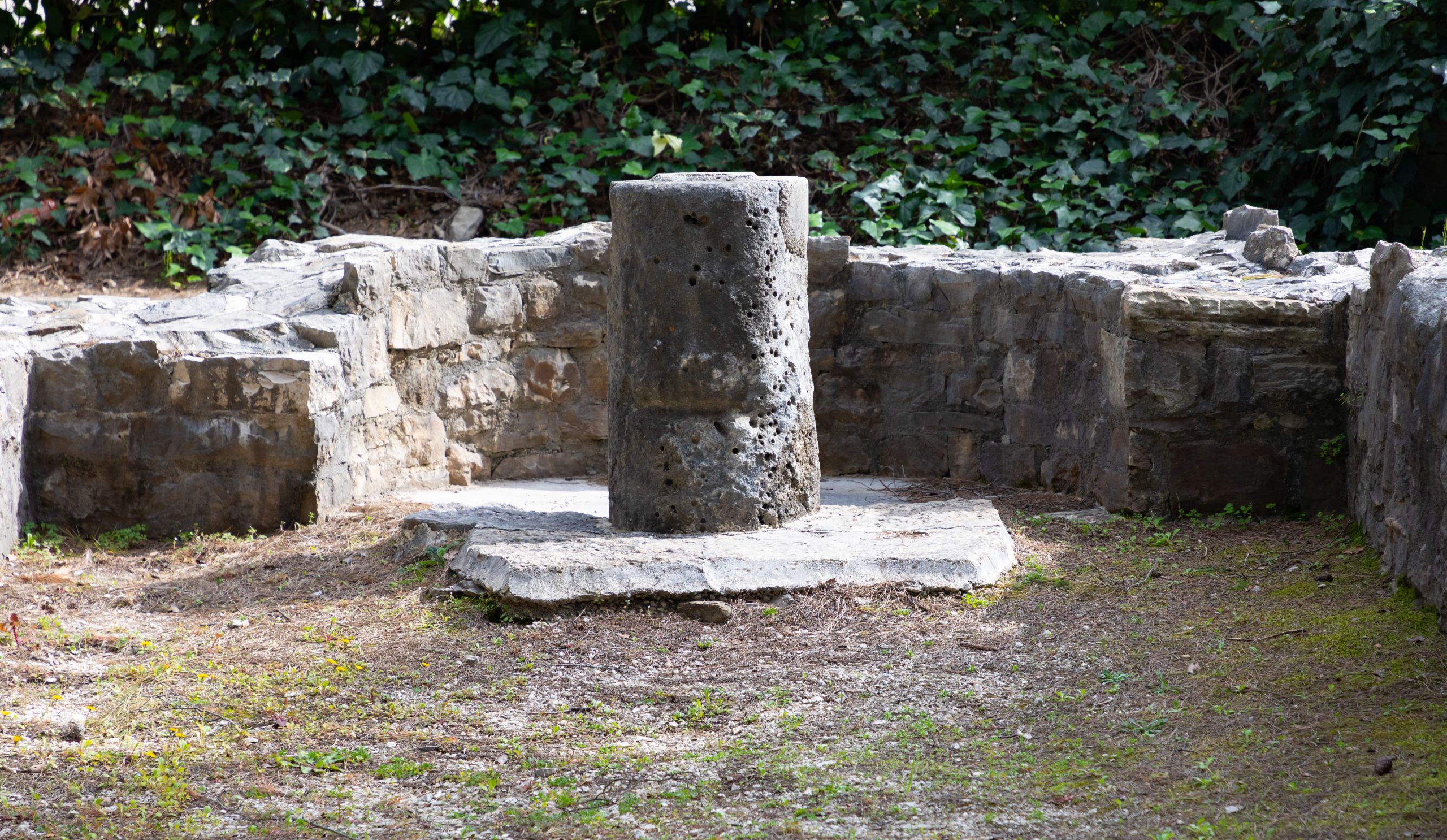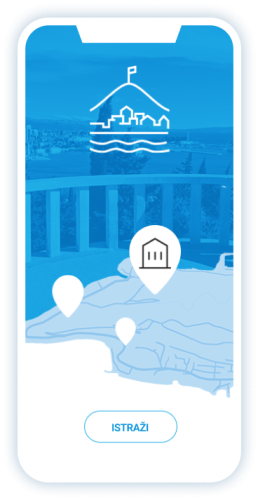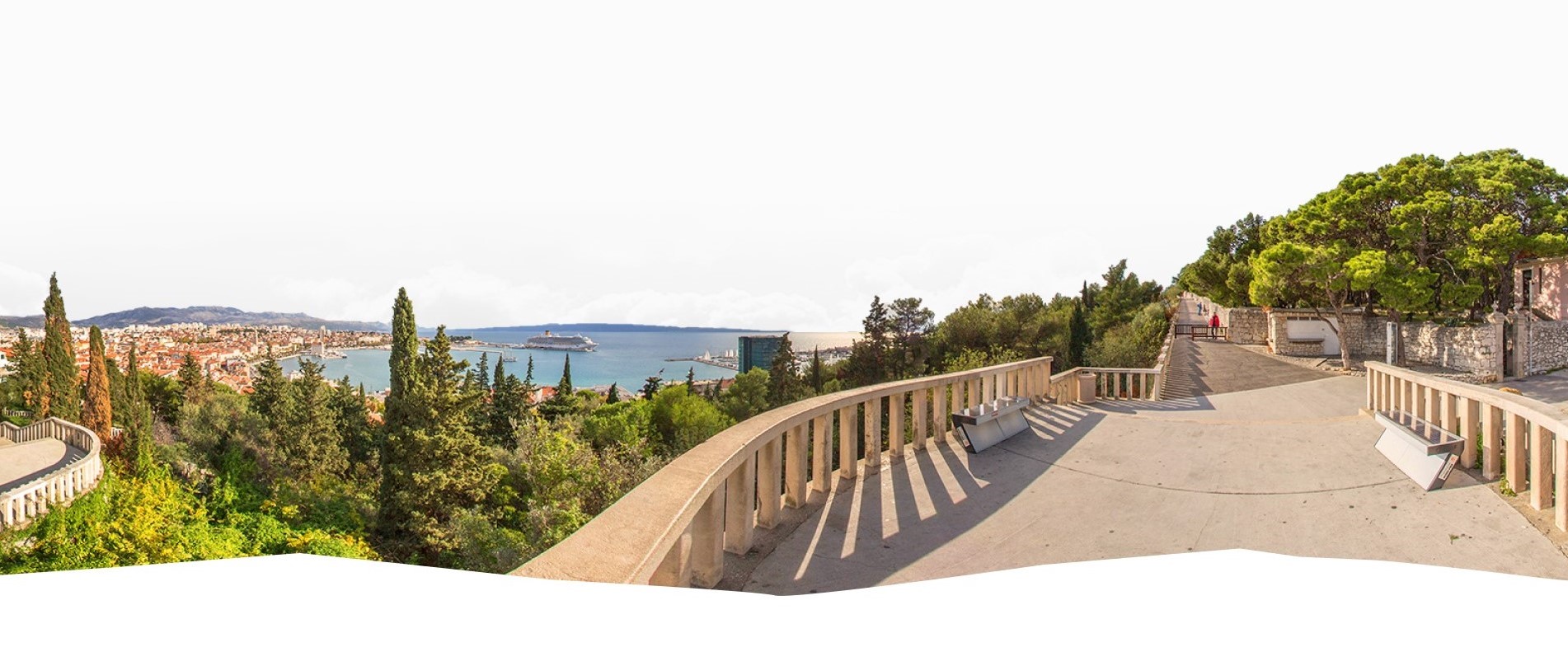Church of St. Nicholas
The Church of St. Nicholas is situated on the plateau below the first Marjan peak. It was built in 1219, with the funds of a Split native named Rako and his wife Elizabeta. Rako and Elizabeta later donated it to the Abbey of St. Stephen on Sustipan. There was a hermit dwelling next to it, which was demolished in 1922 during the construction of roads and viewpoints on Marjan. A Romanesque-Gothic bell tower was later added to the southeast wall of the church.
The facade features a Gothic-Renaissance statue of Christ with depictions of grapes and wheat, symbolizing the Eucharist. The church was last renovated in 1990, when a commemorative plaque from the exterior wall was placed inside, and a new plaque with updated information was placed beside the church.
On the feast day of St. Nicholas, on December 6, a traditional mass celebration is held in this church.
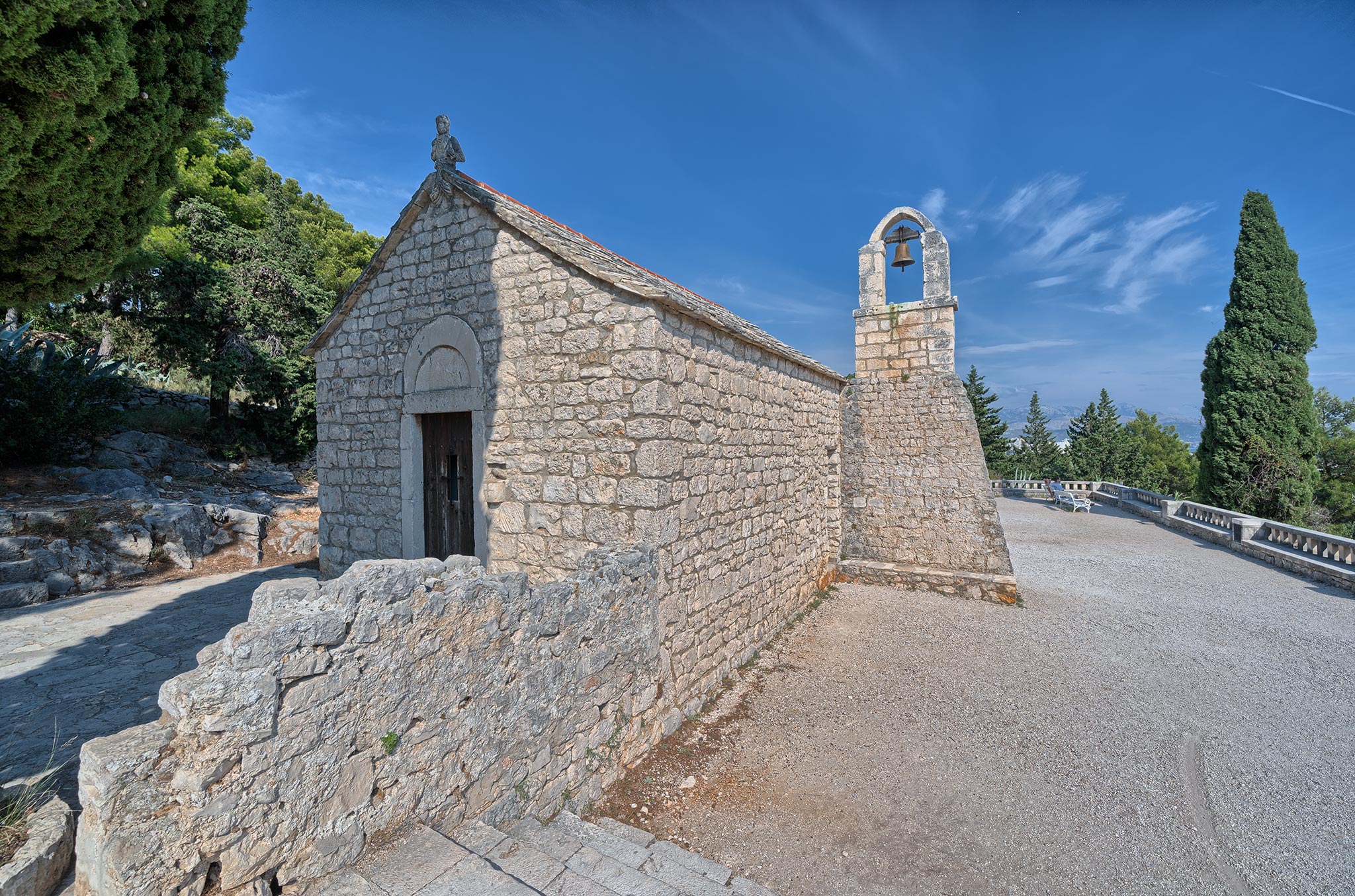
The building of the Meteorological Station
In 1924, the Split City Council decided to build a meteorological observatory on the first Marjan peak. Civil engineer Erald Marchi, under whose guidance the renowned Czech architect Josip Kodl made the construction plans, was appointed director. Meteorological observations on Marjan began on January 1, 1926, with daily reporting starting in 1927. Before World War II, the staff would use flags to send signals to the battery on Sustipan, where a cannon fired to mark noon.
Today, it is one of the most important synoptic stations in Croatia.
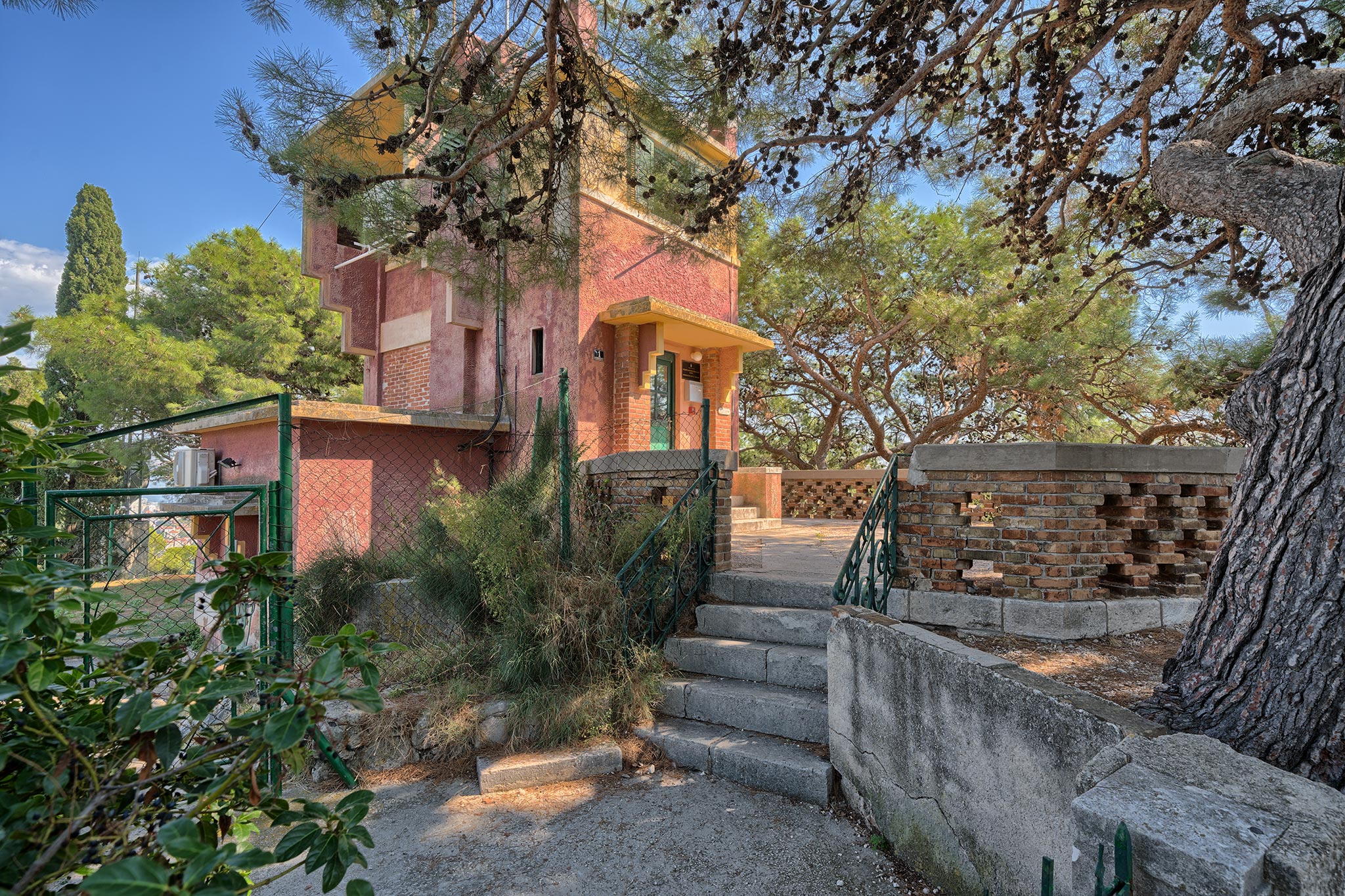

ZOO AND NATURAL HISTORY MUSEUM
The ZOO and the Natural History Museum were opened in 1926. Two years later, the marine aquarium was built, the first of its kind in this part of Europe, and was converted into a terrarium afterwards. The building of the Natural History Museum used to be a restaurant, and it was repurposed to suit the museum's needs based on designs by engineer Senjanović. The first director and curator was Professor Umberto Girometta. After a part of the building collapsed, the museum was relocated, leaving only the ZOO in Marjan.
In 2014, by decision of the Split City Council, the ZOO began housing indigenous domestic animals, with the aim of creating a space for learning.
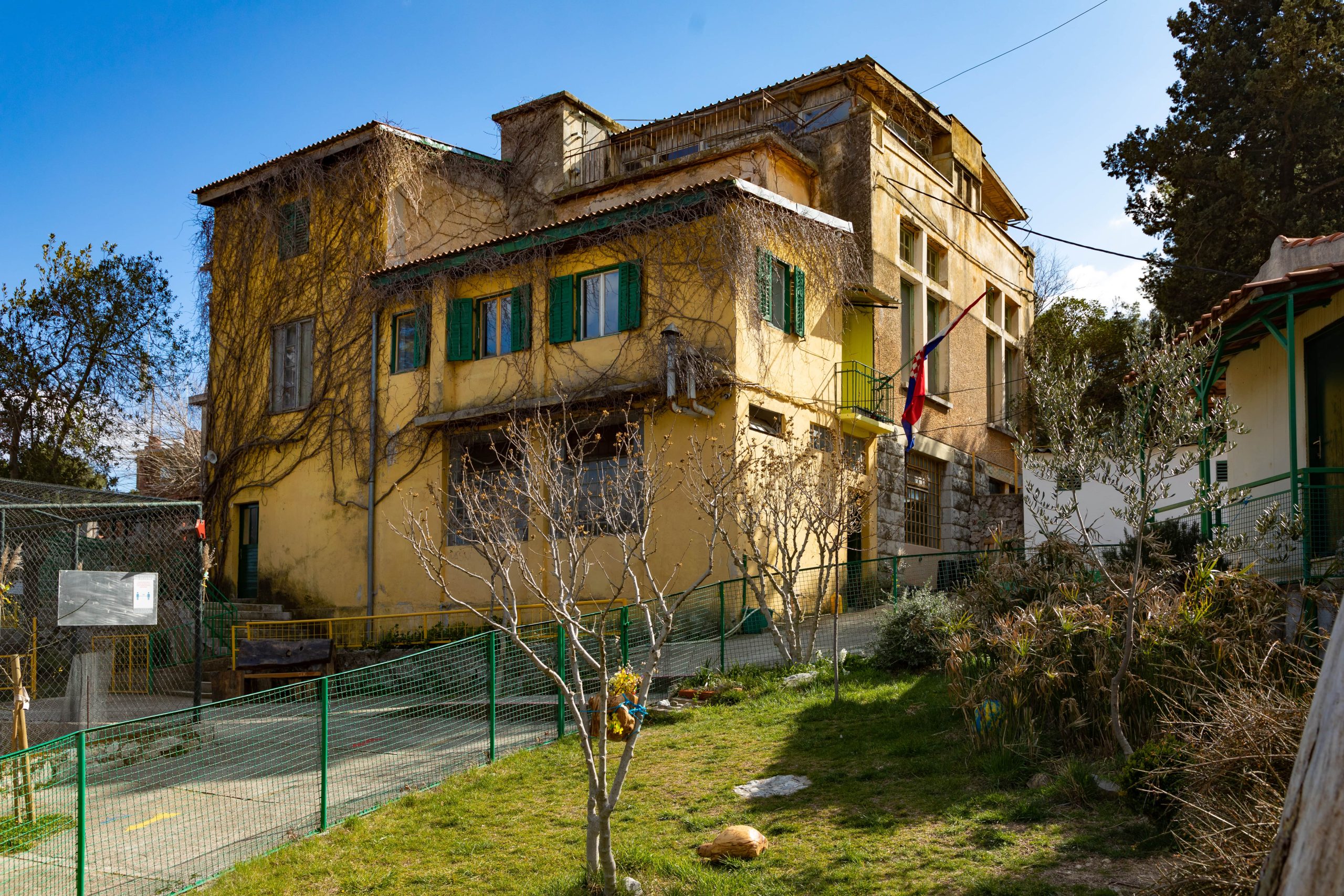

Botanical Garden
Founded in 1951 on the southern slopes of Marjan, the Botanical Garden featured numerous plants from tropical and subtropical regions, with native Mediterranean flora in its northern part. The garden was not only an educational institution but also a promoter of plant cultivation and care. In the early 1960s, it successfully collaborated with numerous botanical institutions worldwide. The garden flourished until the 1980s, when it unfortunately began to deteriorate. The Department of Biology at the Faculty of Science and Mathematics has since taken steps towards its restoration.
TELEGRIN PEAK
The second Marjan peak, Telegrin, stands at 178 meters and is the highest peak on Marjan.
There are several interpretations regarding the origin of its name.
Some authors believe the name of Marjan's highest peak comes from the Latin word “peregrinus”, meaning pilgrim.
Another interpretation is that it was named after the optical telegraph. During the French administration in Dalmatia (1806 – 1813), two optical telegraphs were in use, one of which was located in Split, on Marjan.
A third possible explanation is that the peak was named after “pelegrinka” (a sort of fig). A “pelegrinka” tree used to separate the upper from the lower Varoš at the intersection of Križeva and Milićeva streets, where it still stands as a landmark.
In 1900, a millennium cross made of white stone was erected on Telegrin. At the end of World War I, the Austrian army removed it for “strategic reasons”, to prevent their enemies from using it as a target. In 2013, a new large stone cross was erected on Telegrin.
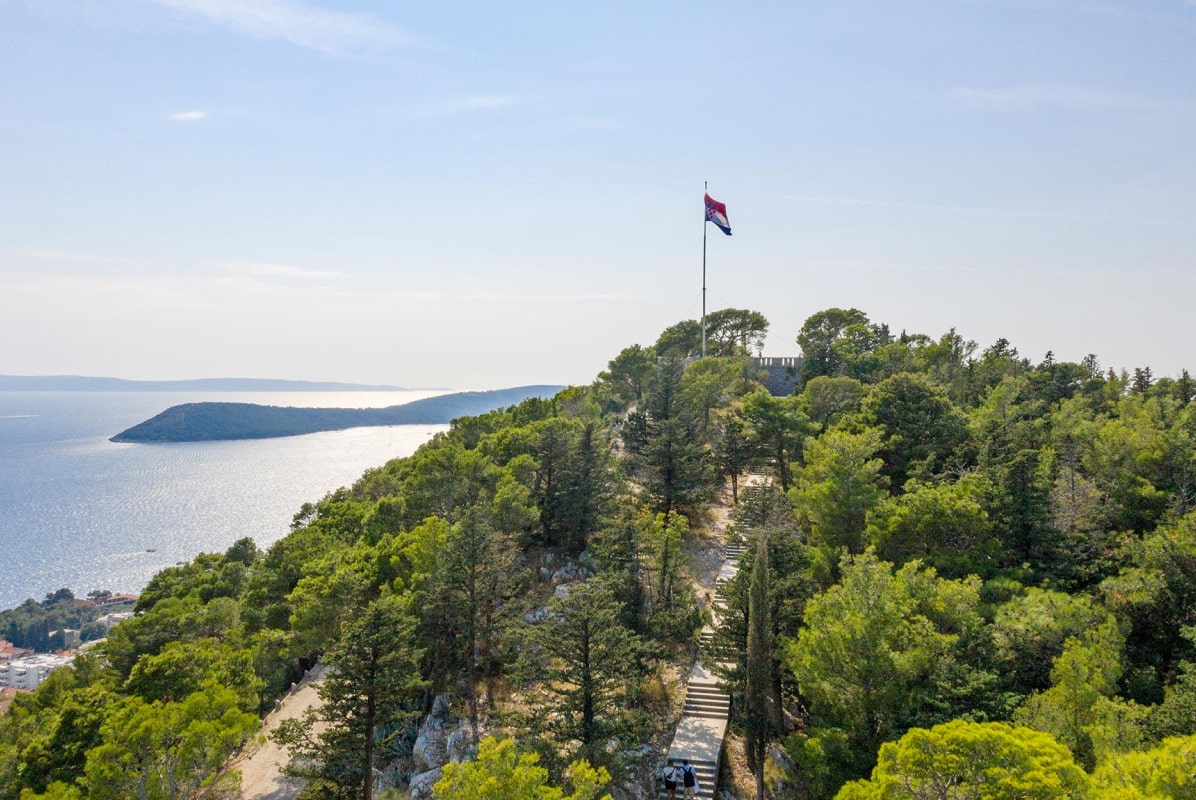
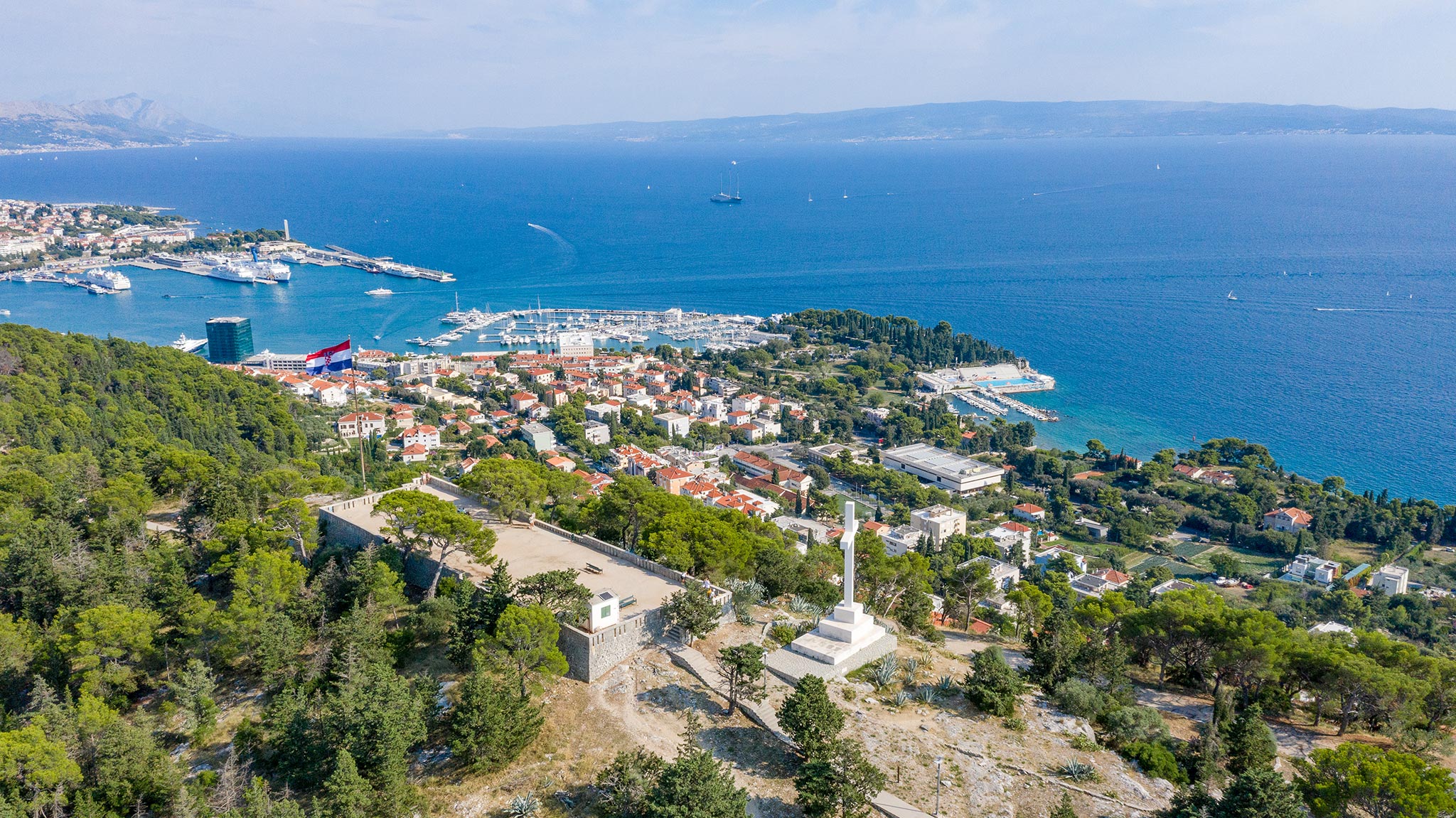
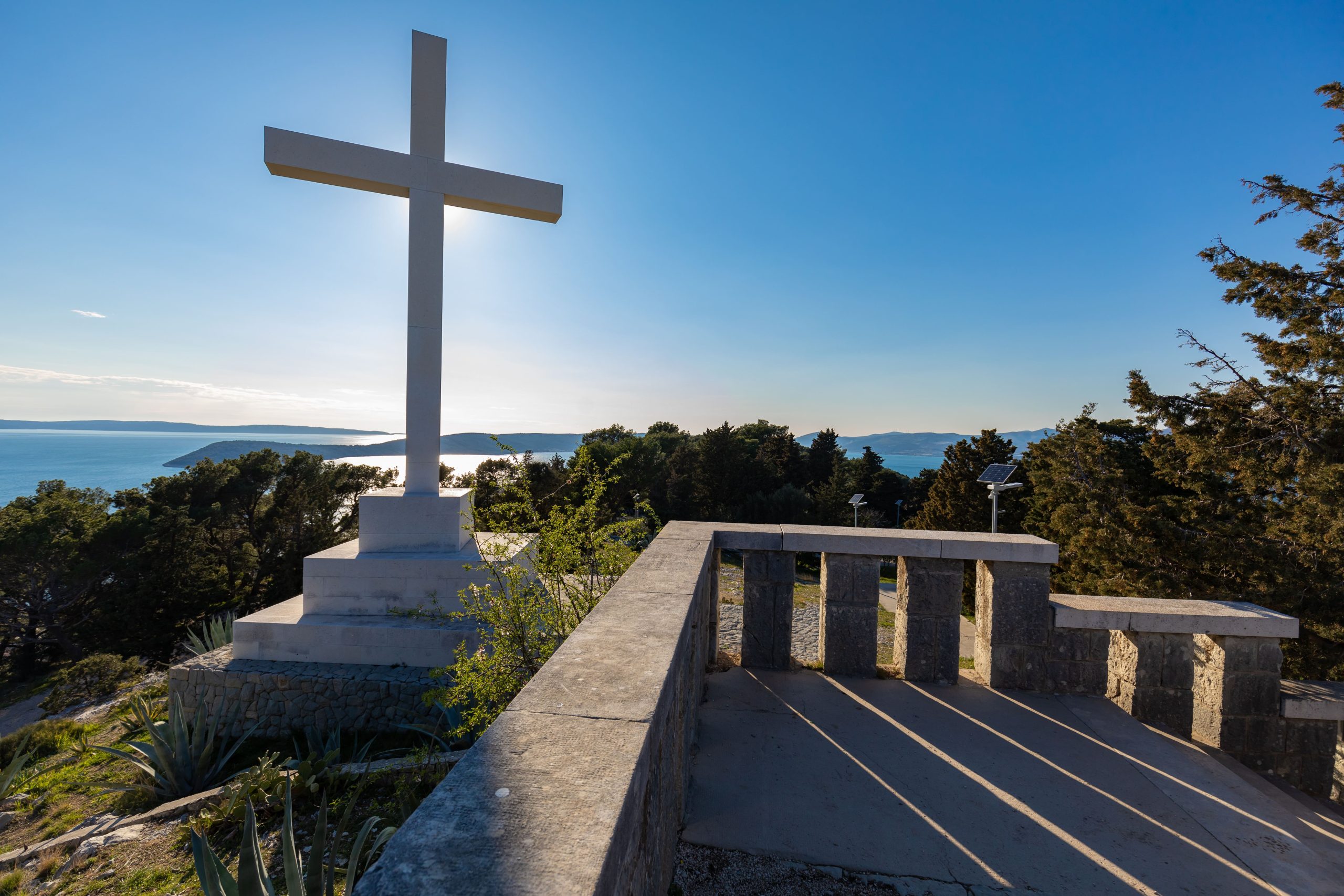
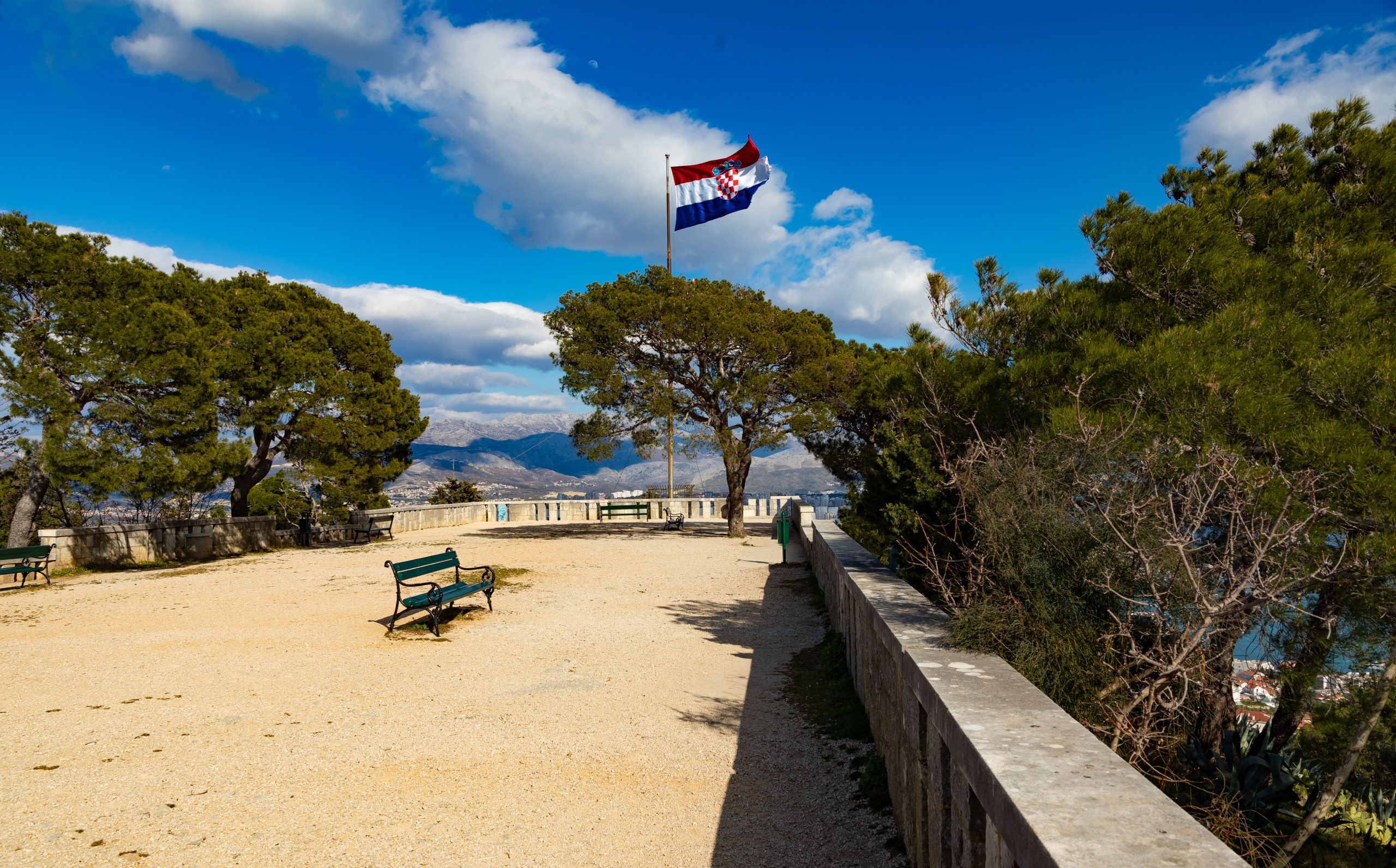
GIROMETTA’S TRAIL
Named after Umberto Girometta (1883 – 1939), a professor of natural science, geography, and physics at a Split high school, who was also the co-founder, curator and first director of the Natural History Museum and ZOO in Marjan Forest Park. He wrote booklets such as Vivarium and Zoological Garden in Split, Marine Aquarium on Marjan, The Nature of Marjan, as well as numerous articles about Marjan.
He died on his beloved Marjan, on April 27, 1939, on the trail that was later named after him. A monument was erected there in his honor.
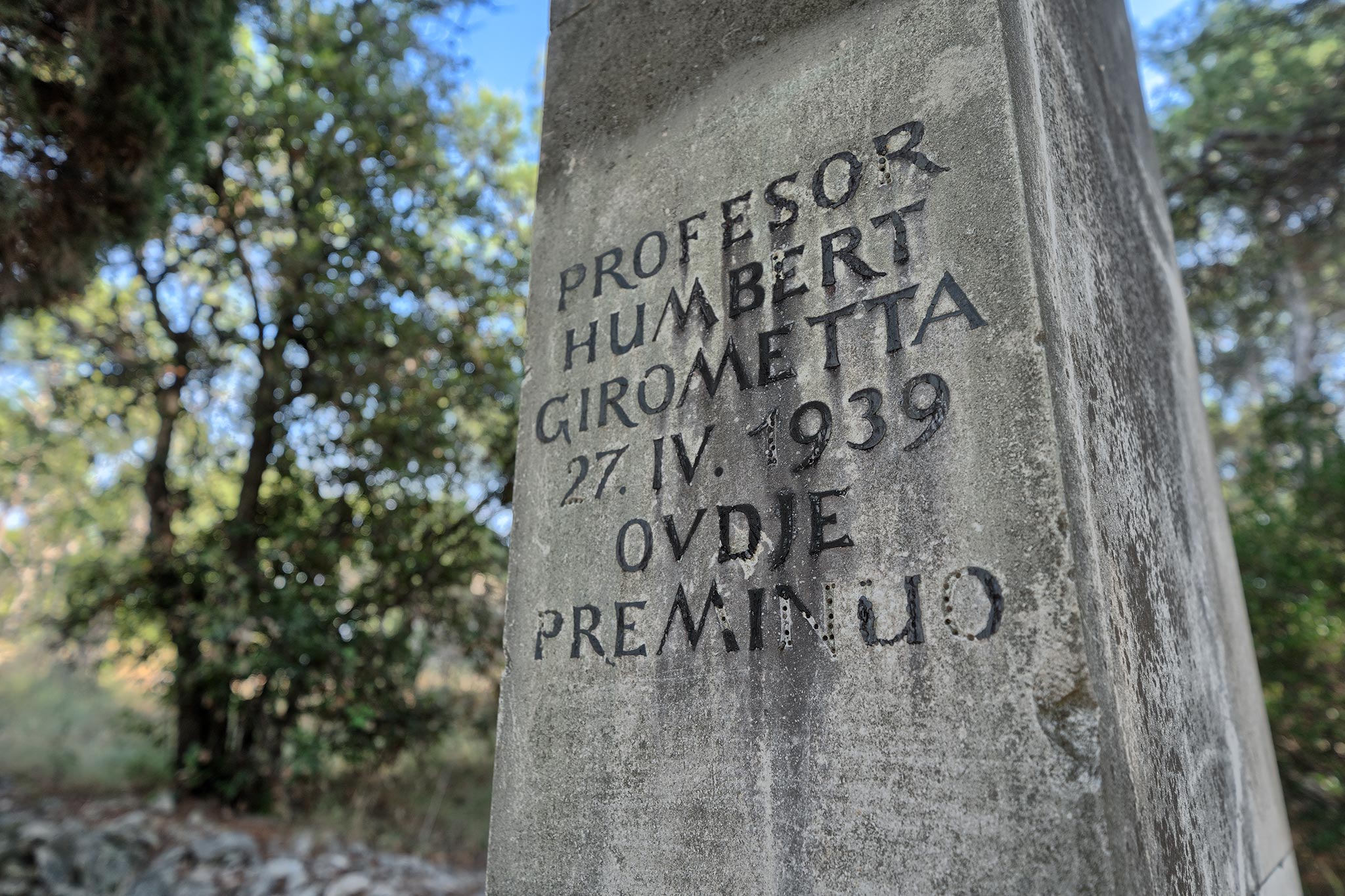
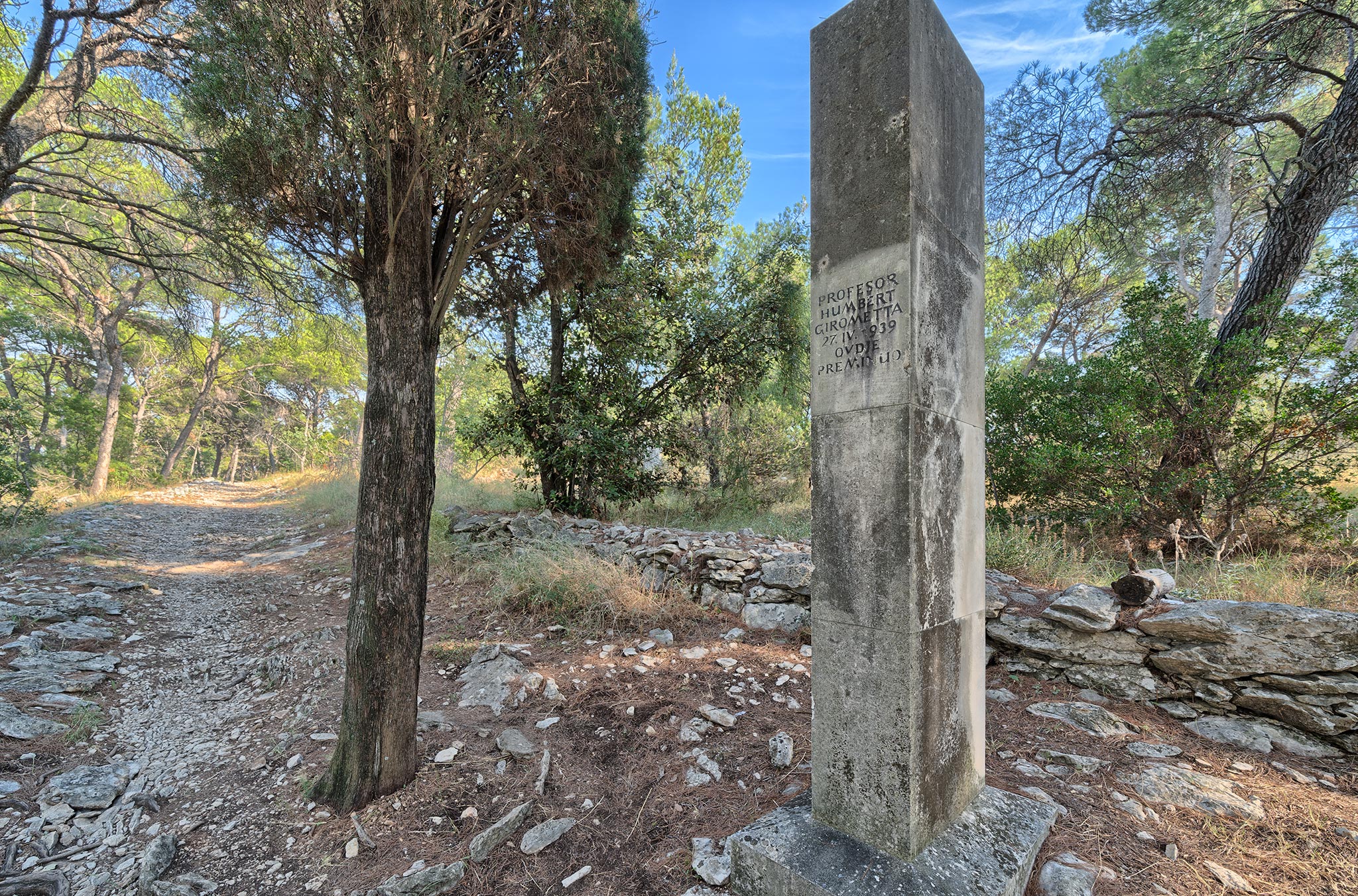

SEDLO
Sedlo is located in the very heart of Marjan, at the junction of Marangunić's walkway and Marjan's Trail. This is where Girometta's Trail ends and Baba Marta’s Trail begins. There is a path and several trails running from Sedlo to the Institute and the cape of Marjan – the westernmost point of the peninsula. They lead through dense Marjan forest, and are surrounded by dry stone walls and piles. The road from Sedlo towards the southern side of Marjan leads to ‘Šantine stine’, the cliffs forming the spine of Marjan.
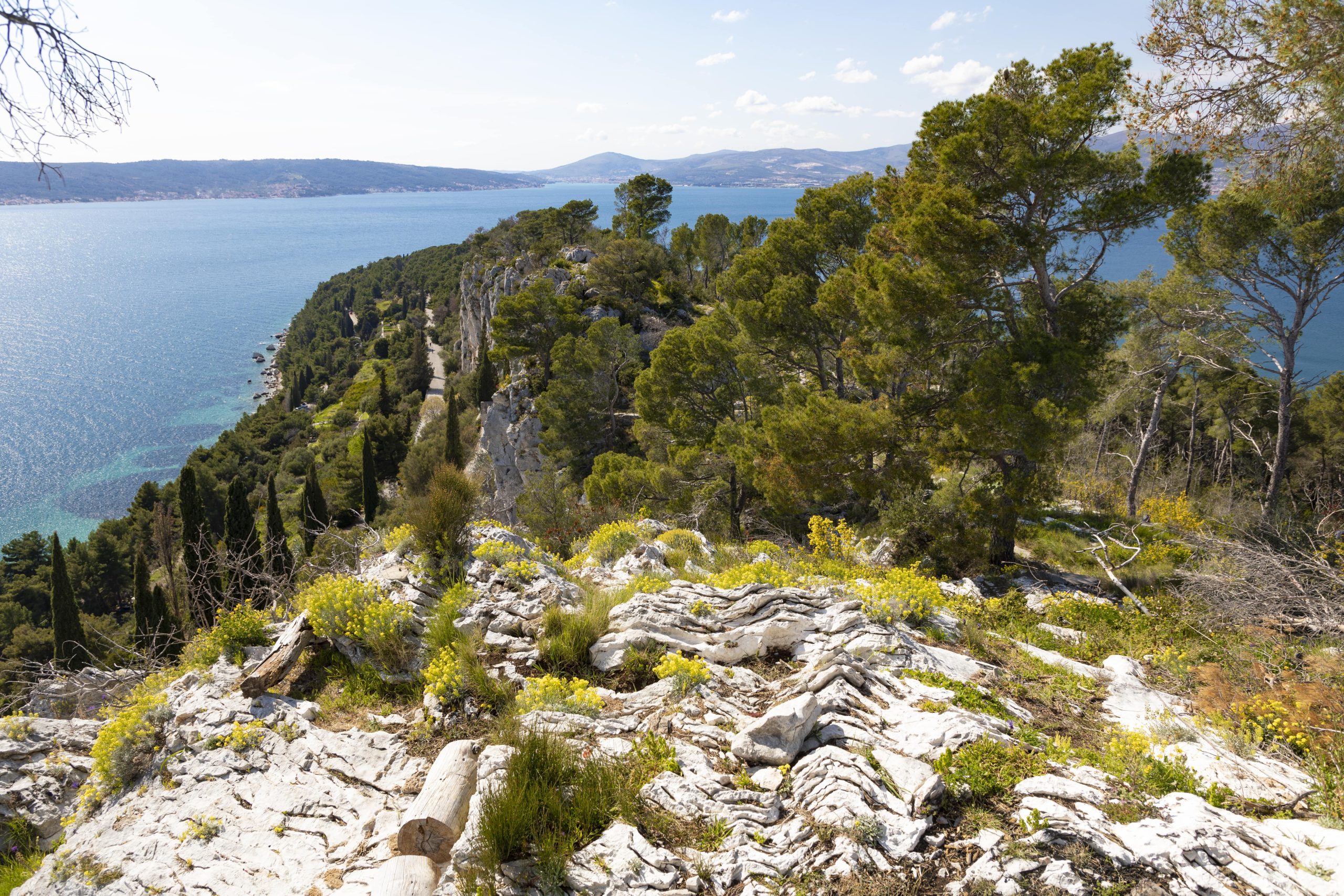
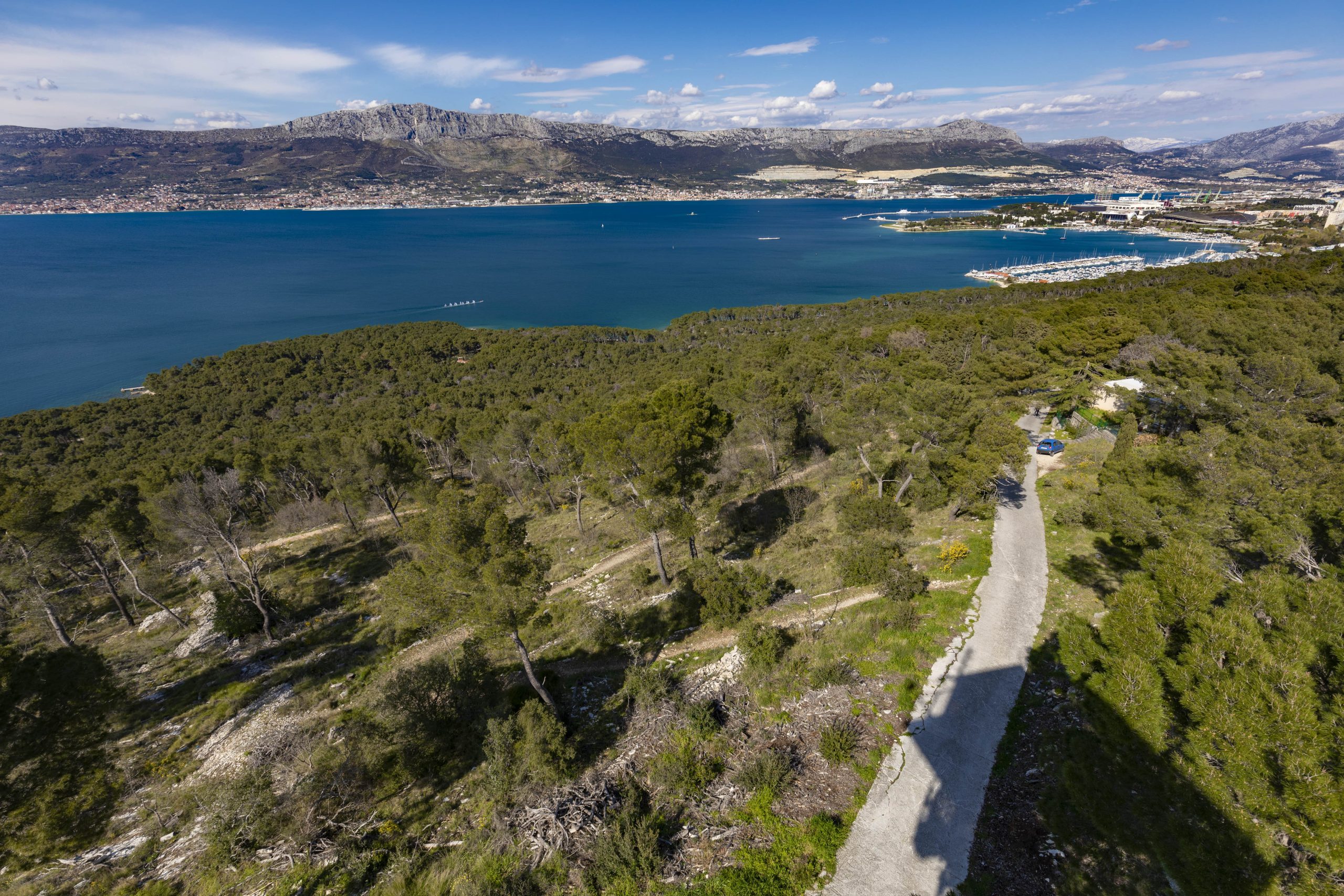
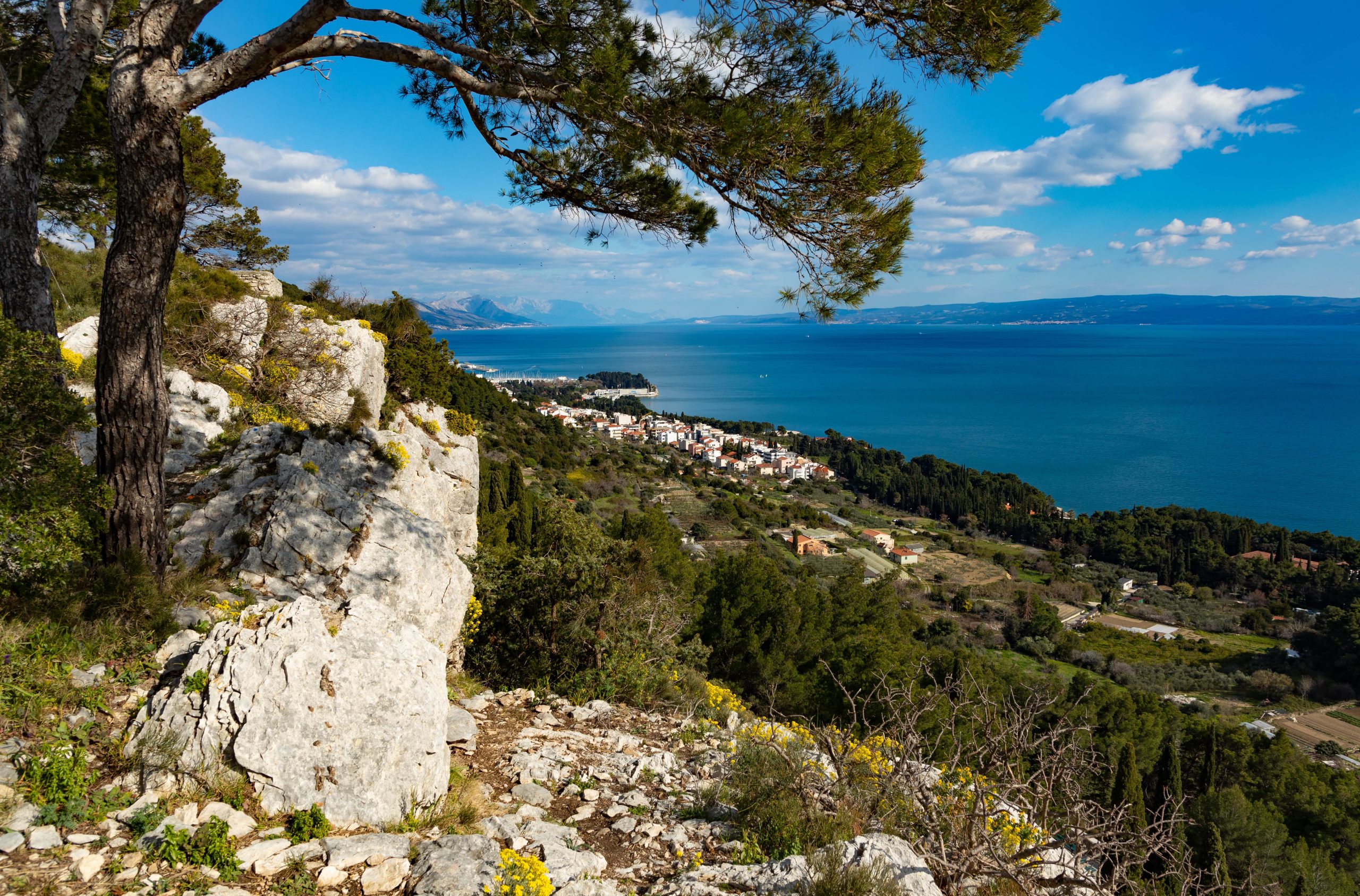
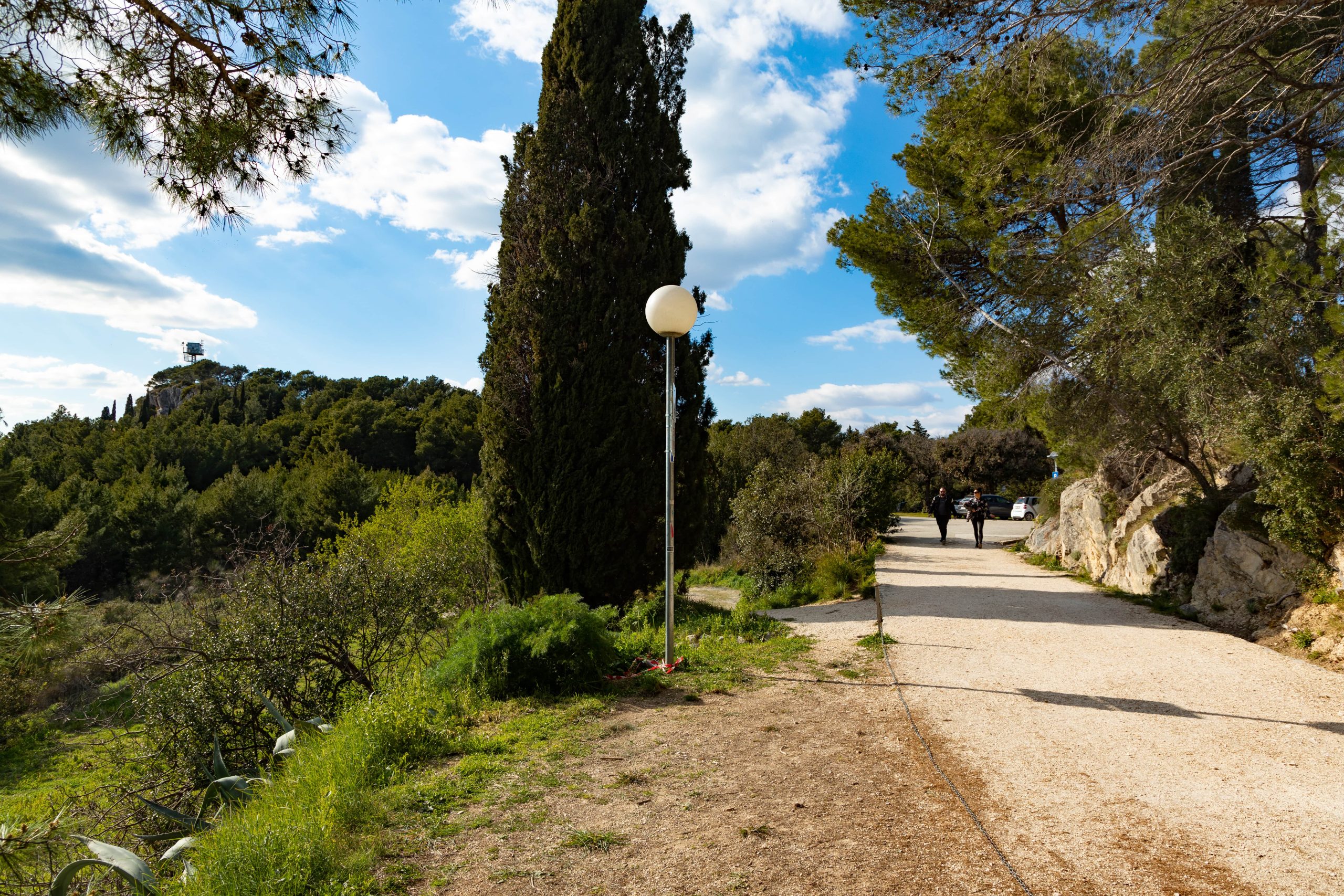
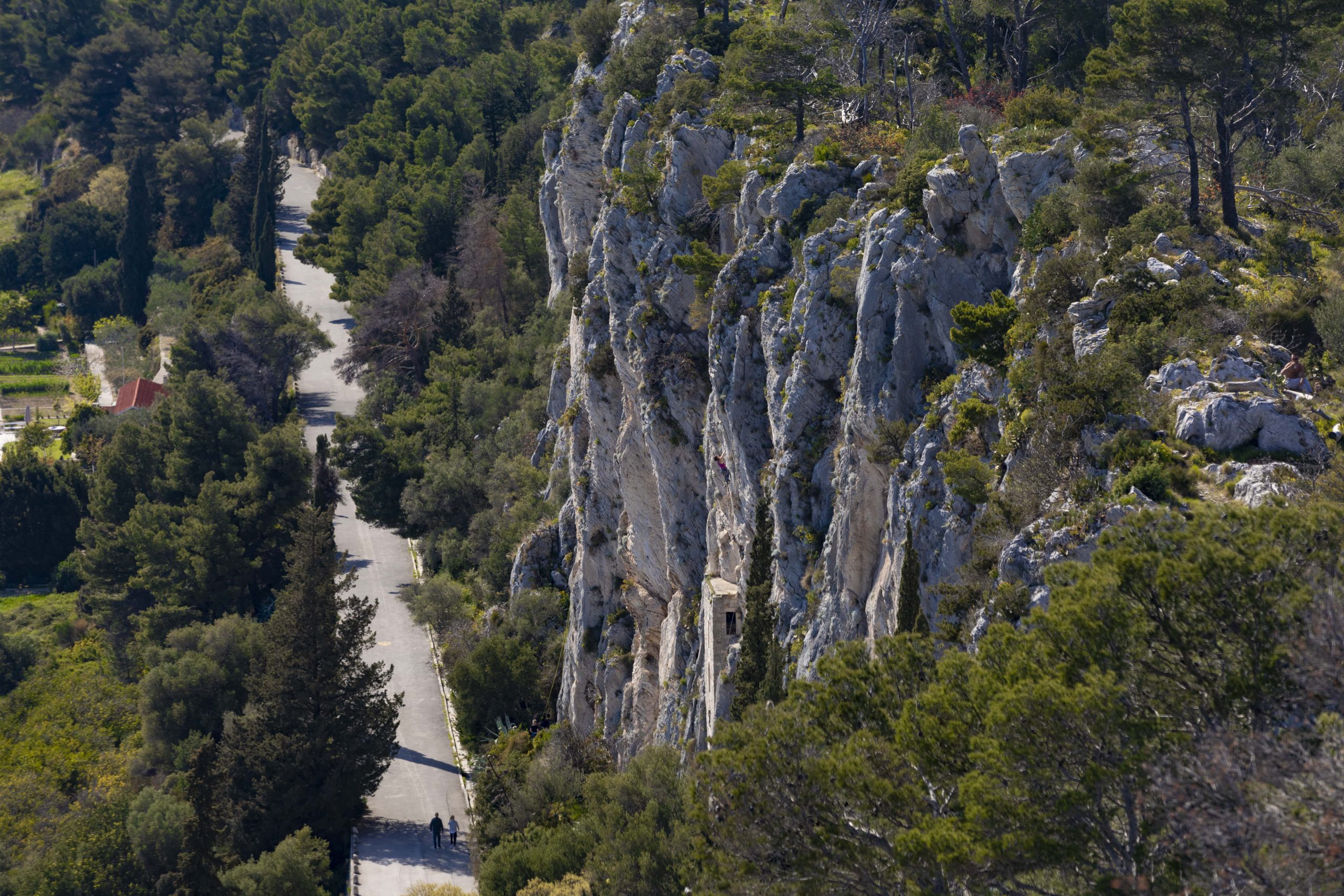
CHURCH OF OUR LADY OF BETHLEHEM
Stone steps surrounded by cypress trees will take you to a simple single-nave church, likely built before the year 1500. Over time, the church had deteriorated due to neglect, but it was restored in 1927 and 1928 by members of the Marjan Association, when a monumental staircase was also added.
The church has a beautiful stone altar, featuring a depiction of the Nativity in the center. To the left is St. Jerome, and to the right is St. John the Baptist. In the lunette above is a depiction of the Crucifixion.
The Church of Our Lady of Bethlehem, once known as S. Maria ad presepe (of the crib), is one of the few churches in Croatia dedicated to the Nativity of Christ. Every year on Christmas Eve, December 24, an early midnight Mass is held here at 4:00 PM.
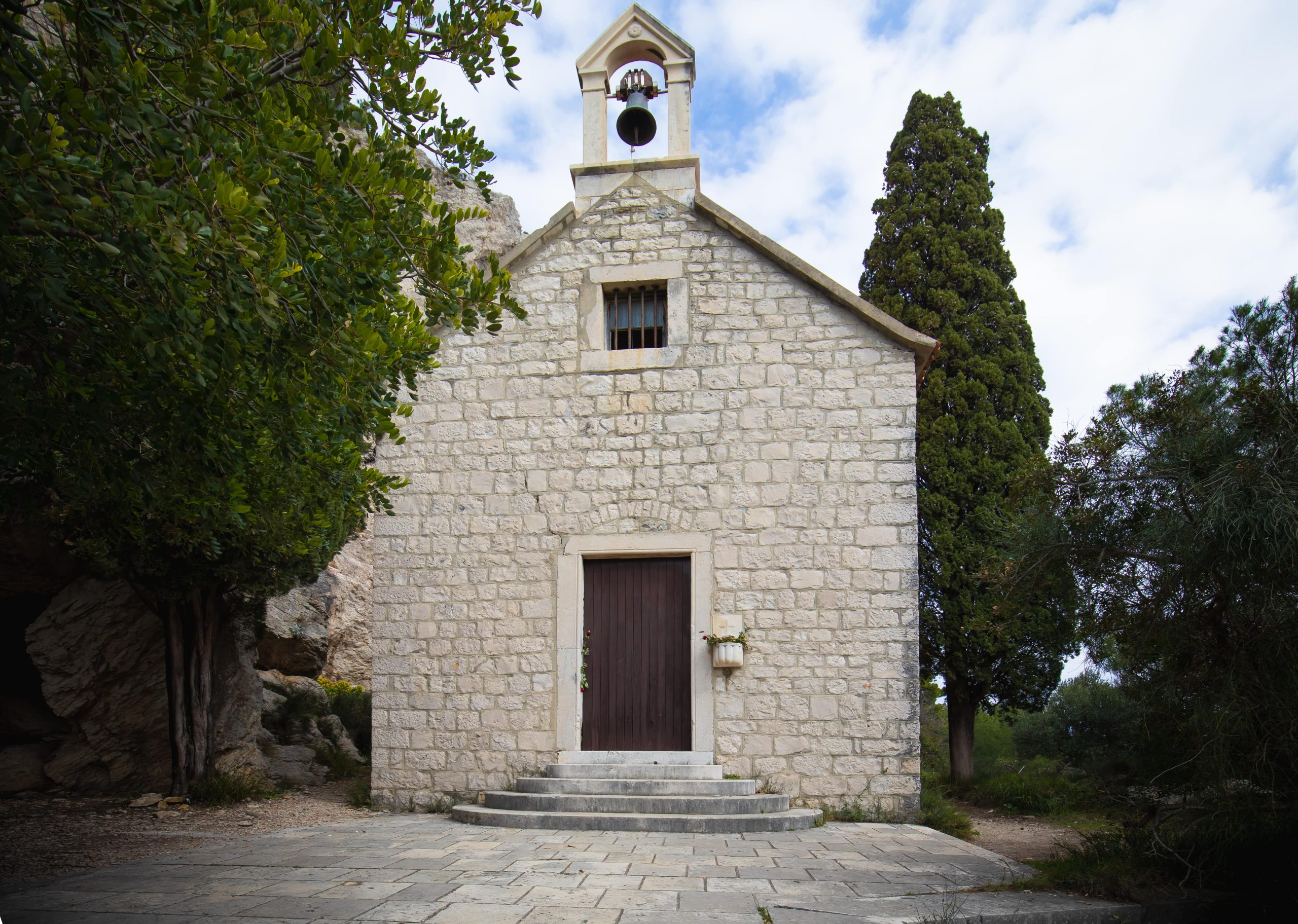
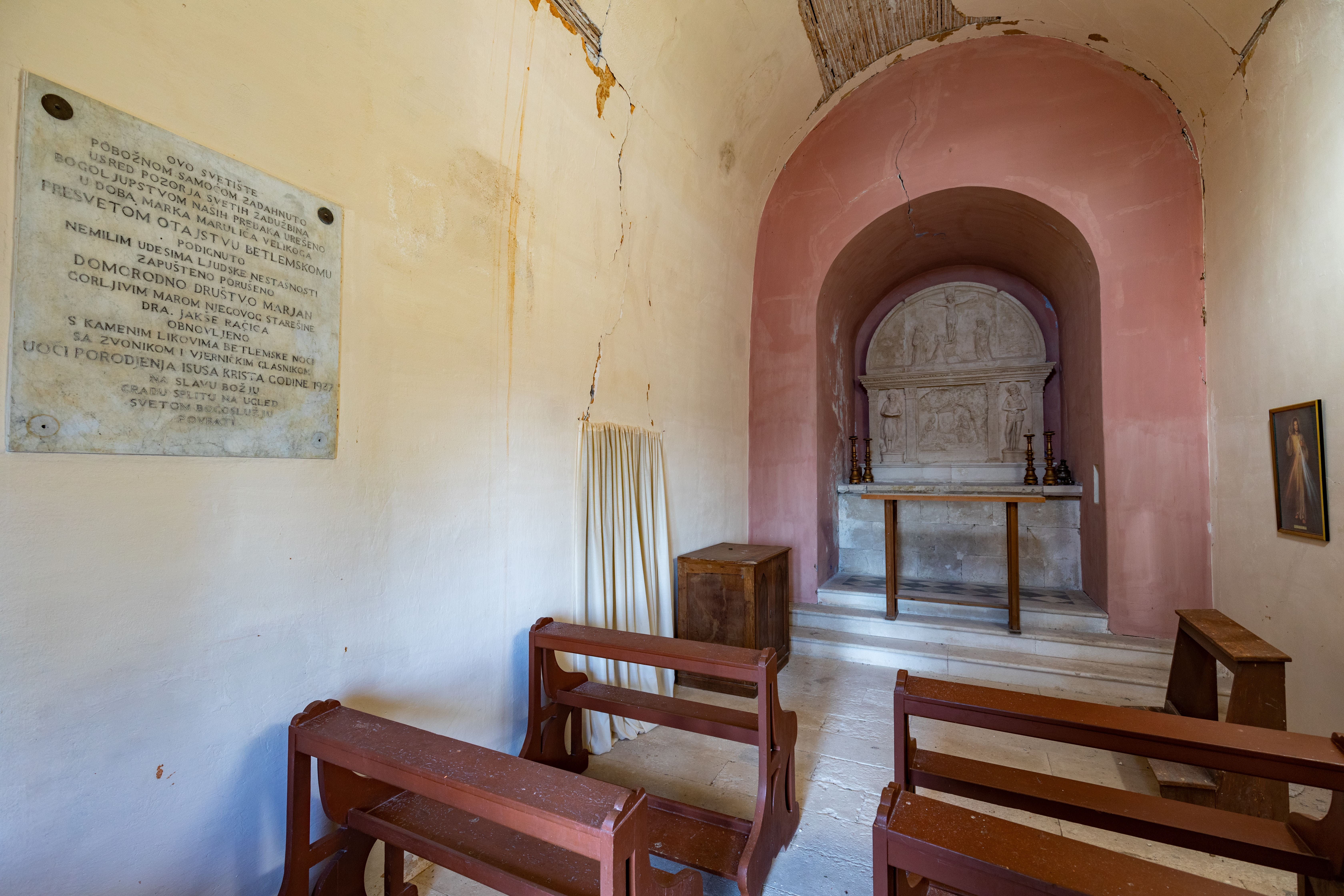
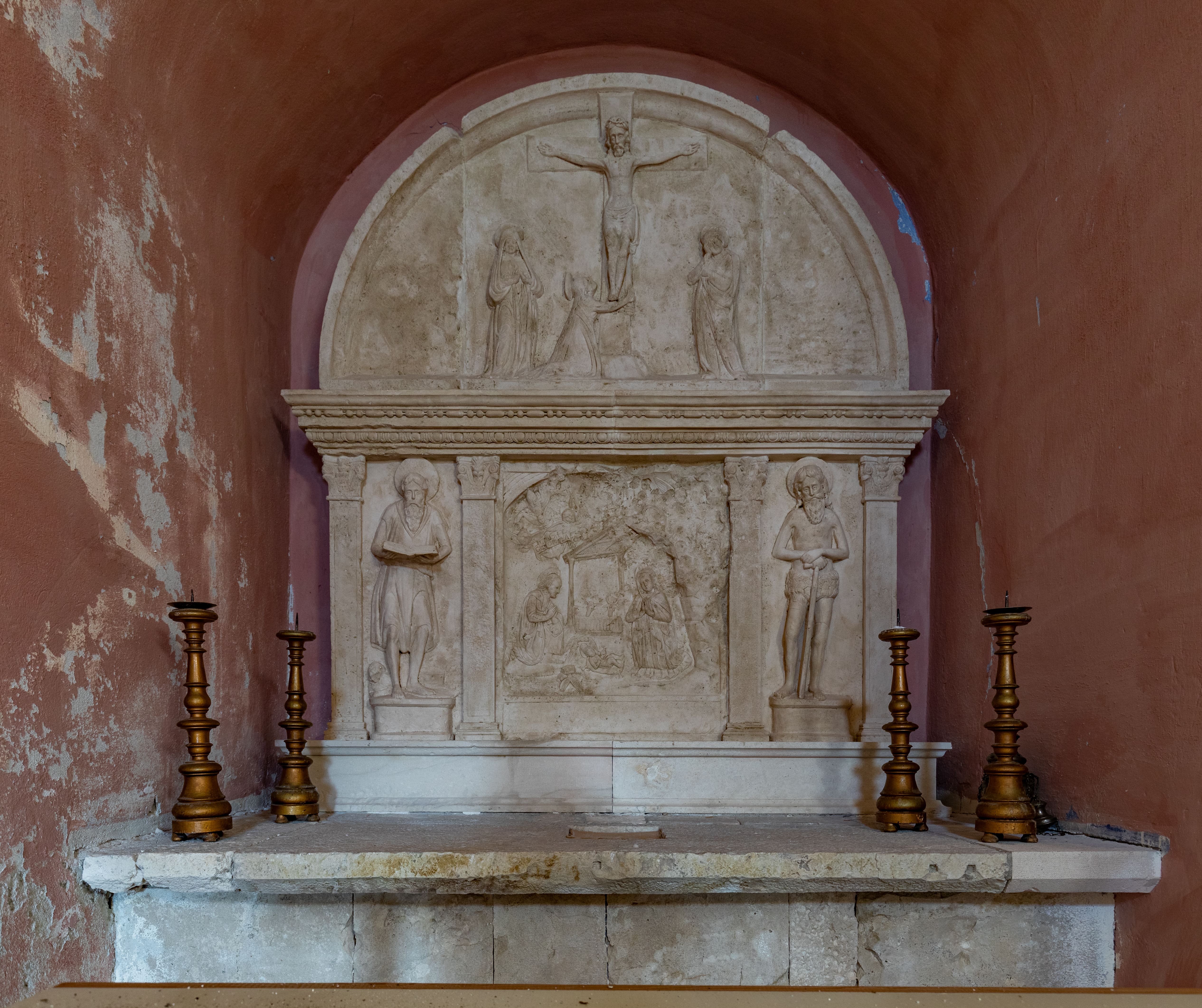
THE VIEWPOINT BELOW THE CHURCH
From this viewpoint, there is a beautiful view towards Bambina glavica. It is believed that the oldest prehistoric settlement on Marjan was located on or near Bambina glavica.
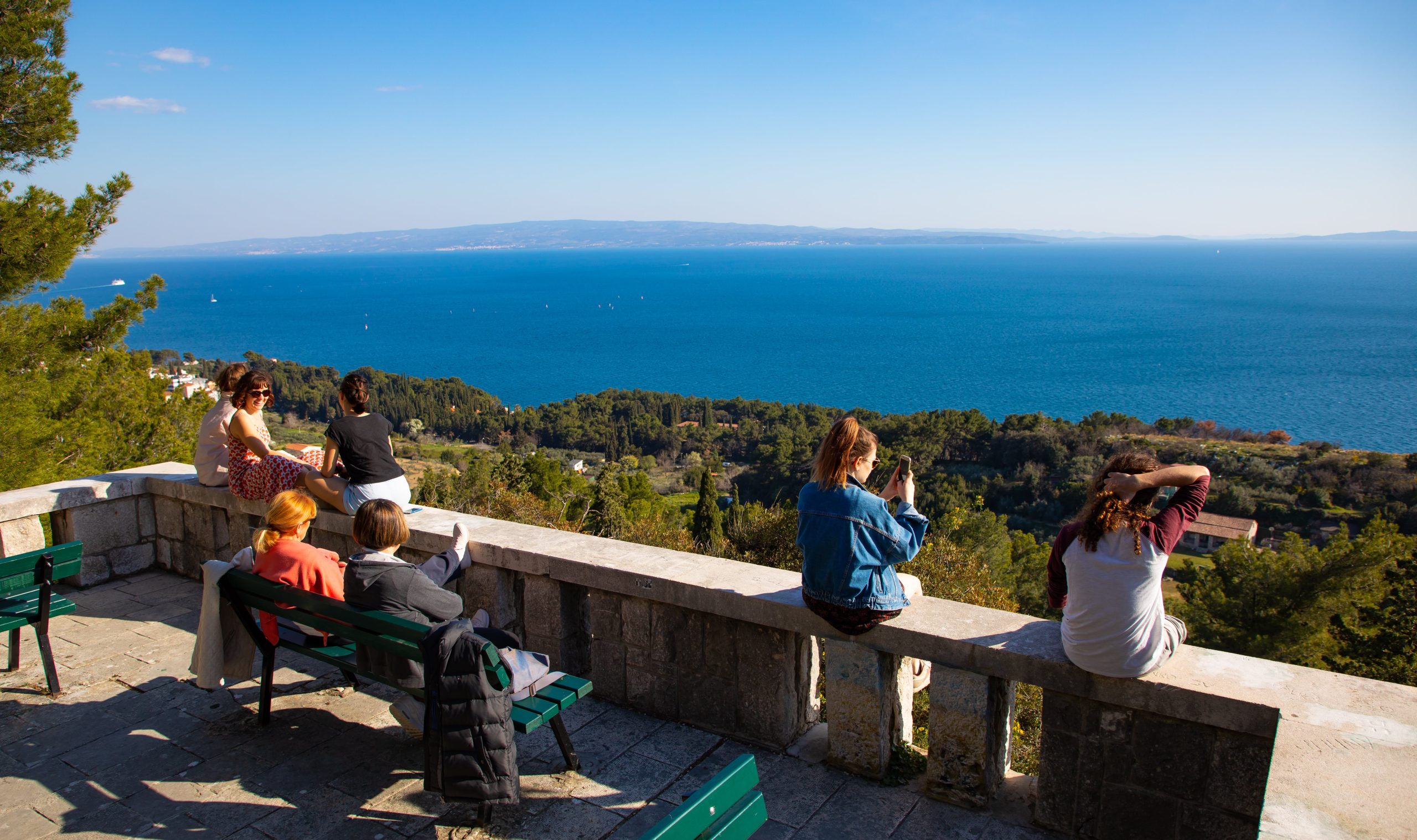

ŠANTINE STINE – THE THIRD MARJAN PEAK
The peak of these rocks is 148 meters high. There is a fire lookout post here, with an observation deck at the base. The rugged terrain has helped preserve the indigenous flora, and allowed for the formation of xerophytic and halophytic plant community. Species that grow here include the Dubrovnik knapweed (Centaurea ragusina), chimney bellflower (Campanula pyramidalis), shrubby featherflower (Phagnalon rupestre), and caper bush (Capparis rupestris). Šantine stine also contain many popular free climbing routes.
CHURCH OF ST. JEROME
The Church of St. Jerome was built in the 15th century. It is believed that this place is associated with St. Jerome, a hermit and church writer who is also revered as the patron saint of Dalmatians.
The church contains a stone altar signed by Andrija Aleši in 1480. In the center of the altar is a depiction of St. Jerome in a cave, with St. John the Baptist on the left and St. Anthony the Abbot on the right. In the lunette above the cornice is a depiction of the Lamentation. A relief of St. John the Evangelist is embedded above the church courtyard gate, and it was probably transferred from the Church of St. John the Evangelist east of Bambina glavica.
The church also had its confraternity, who were particularly active on the feast of St. Jerome – the patron saint of the church. For that occasion, the locals decorated the church and its surroundings and gathered at the holy mass early in the morning. The would bring home made food and sing Puče moj and Merjane, Merjane.
ORATORY OF ST. CYRIACUS OR HERMITAGE
(ermitage, French = dwelling place of hermits, secluded place) = Obitavalište pustinjaka, osamljeno mjesto
In the vertical cliff of Šantine Stine, there is a cave enclosed by a wall on its southern side.
The interior of the cave was once divided into three levels, but only two are preserved today. It is believed that the cave of St. Cyriacus was here, known as an oratory or a place for prayer. Later, hermits lived there, whom the people of Split regarded as holy men. This is where the name “Šantine” or “holy” rocks comes from. At that time, this place was very far away from the city and was rarely visited.
For centuries, annual pilgrimages were held there, known among the locals as the “processions of the March Fridays”.
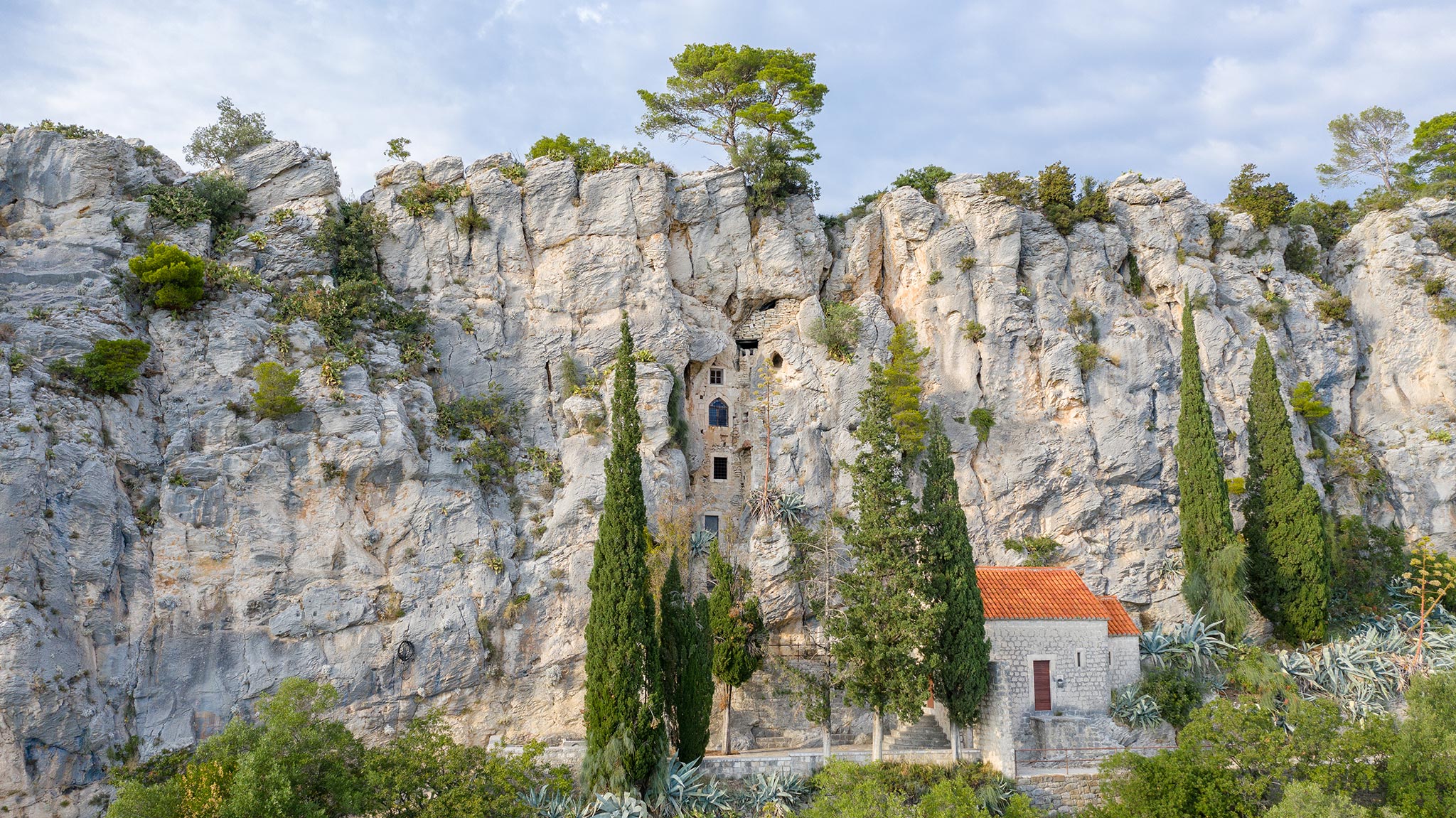

KAREPIĆ TOWER
In close proximity to the St. Jerome hermitage, in a similar vertical cleft of the same rock, is a tower built in 1523, which served as a shelter of field workers in case of Turkish or pirate attacks. Above the entrance door is the Karepić family coat of arms with the inscription: CONCORDES VOTA SEQVNTVR DISCORDES FRVSTRA LABORANT M.D.XXXIII – “To the united, vows are fulfilled; those who are divided among themselves work in vain, 1523.”
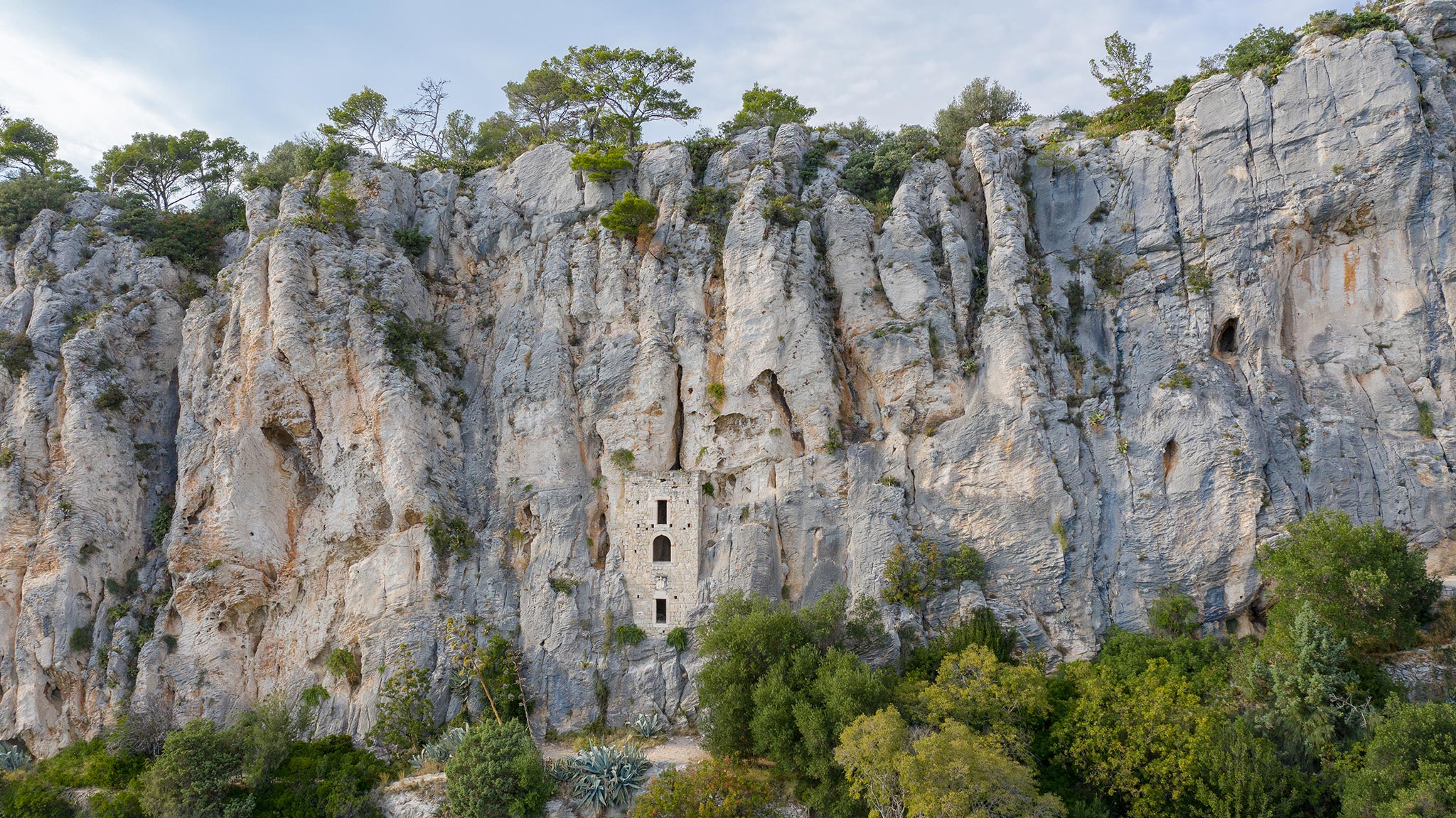

The Church of Our Lady of Seven Sorrows
This church is also mentioned in historical sources as S. Maria Pietatis.
The church altar features a stone relief of the Lamentation (Imagine Pietatis Beatae Virginis) from around the year 1500, depicting the Virgin Mary holding Christ's body in her lap. On the sides are angels with torches, and in the background there is a depiction of Calvary.
What makes this church unique is the votive messages written on the walls, as well as various votive items left by visitors. The Feast of Our Lady of Sorrows is celebrated on September 15, while the Exaltation of the Holy Cross is marked the day before, on September 14.
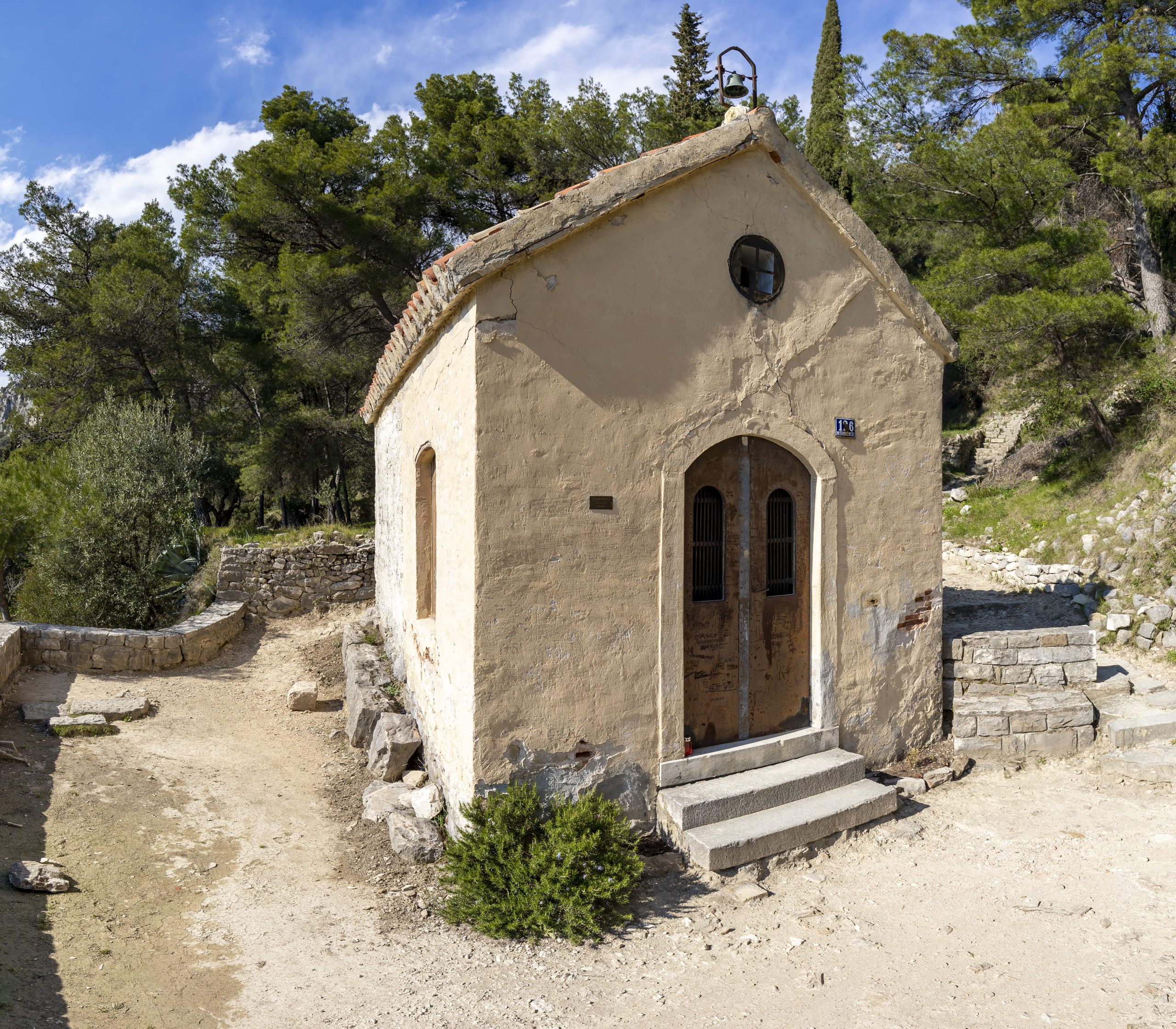
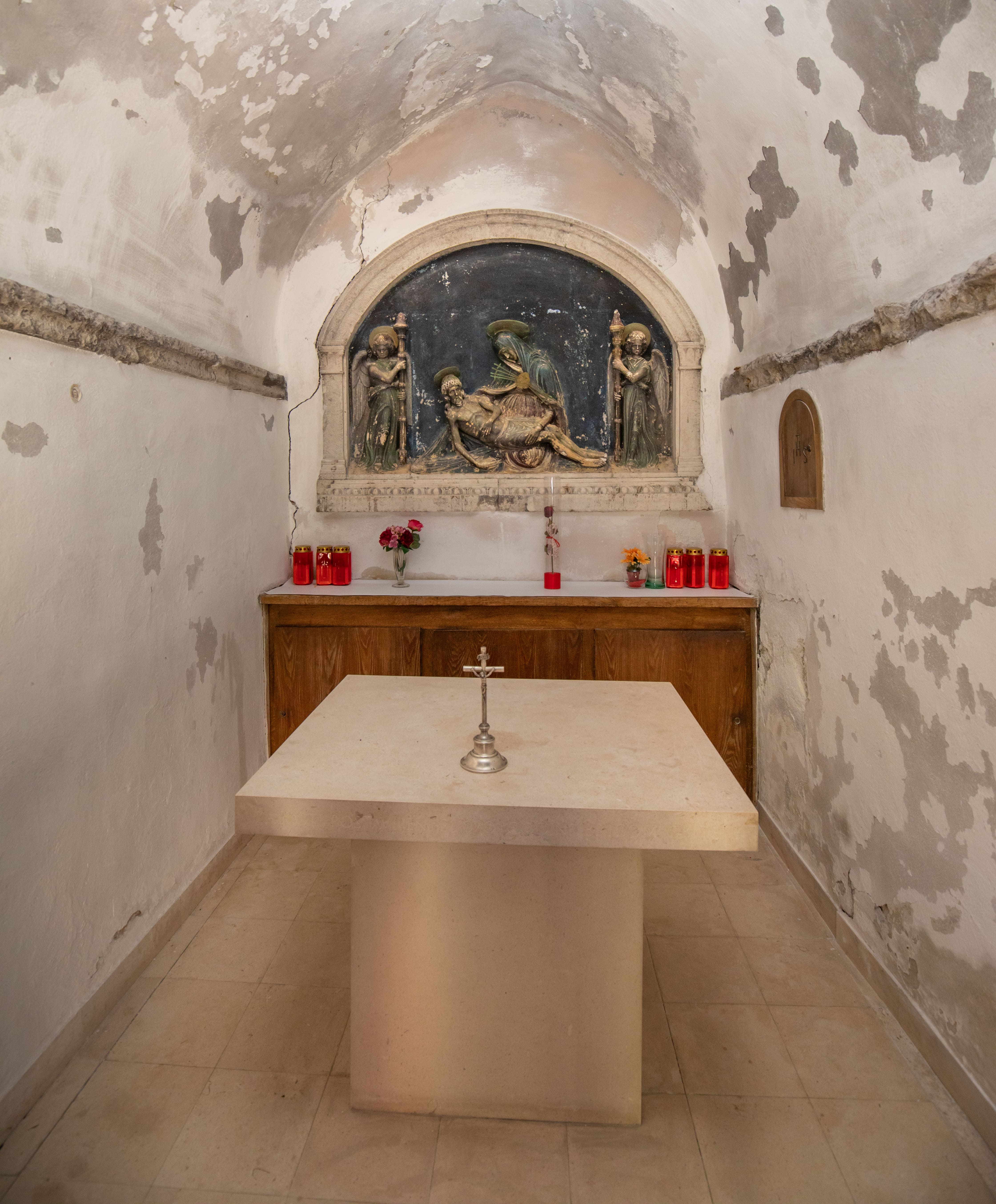
INSTITUTE OF OCEANOGRAPHY AND FISHERIES
The Institute was founded in 1930, and the building was constructed in 1933, to the design of civil engineer Fabjan Kaliterna. Before the building on the Cape of Marjan was completed, the Institute used the premises of a lodging house (Villa Schiller, today Villa Dalmacija). The first director of the Institute, selected through an international public call, was Norwegian university professor Dr. Hjalmar Broch, who moved from Oslo to Split to organize scientific research at the Institute based on Norwegian experiences.
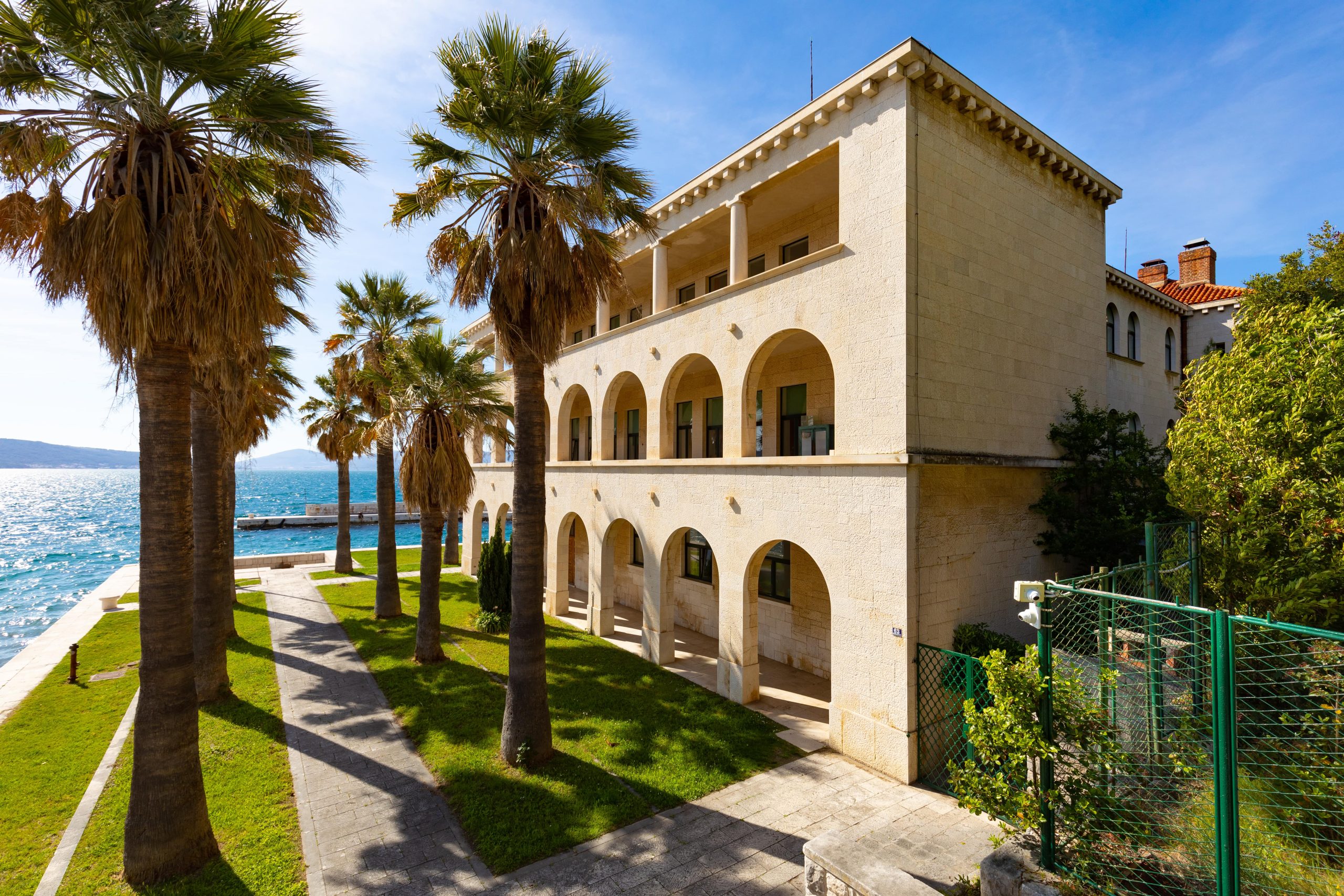

Church of St. George
First mentioned in 1275, this church was built at the beginning of the 9th century. It was later partially demolished but was restored following archaeological investigations conducted between 1972 and 1973. A fragment of the altar screen was discovered during research in 1954, and a replica was subsequently placed in the church. The last renovation took place in 1996, when a replica of the altar was consecrated, based on its presumed original form.
The cape of Marjan is the westernmost point of the Marjan Peninsula, known among the locals as “Punta Marjana”.
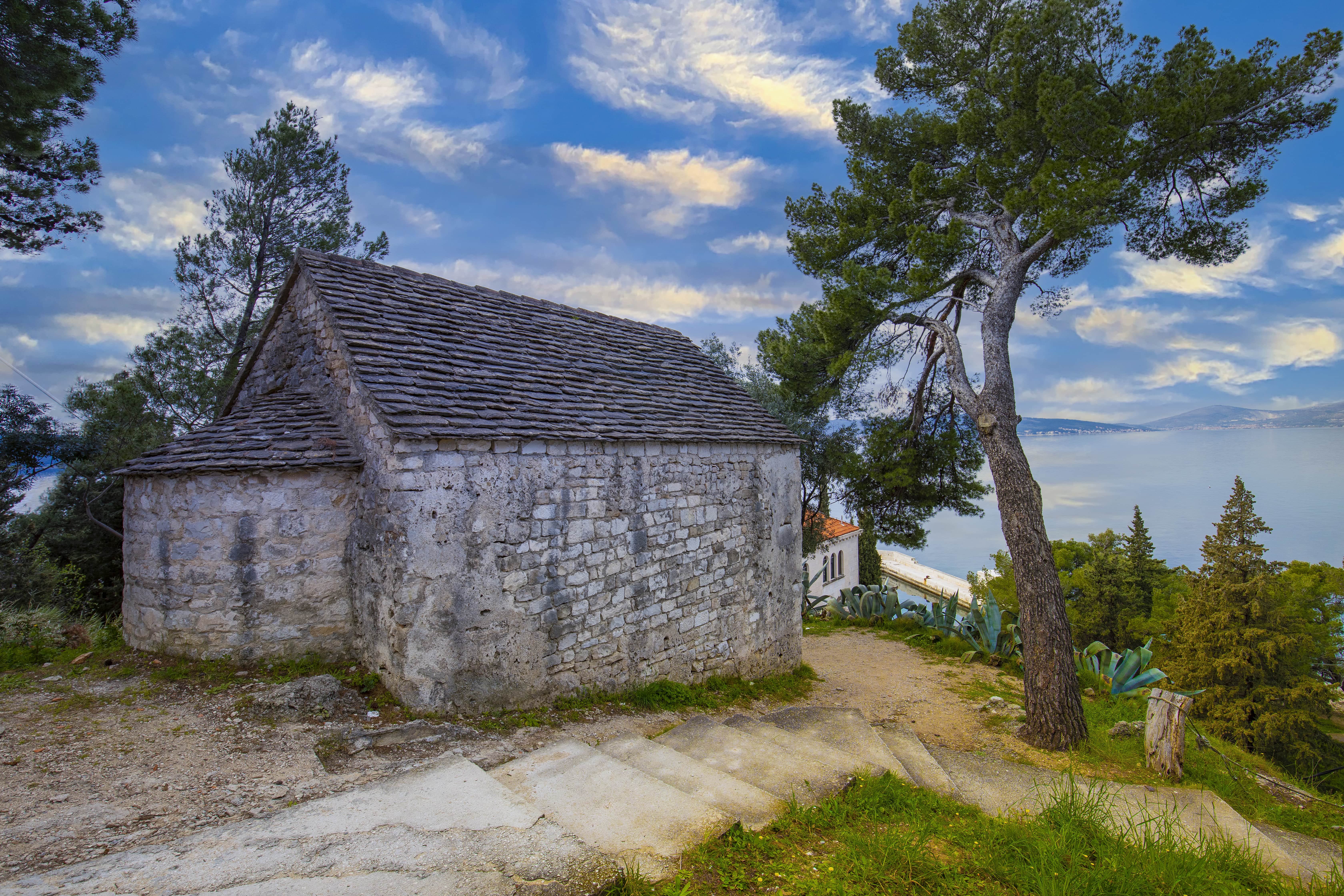
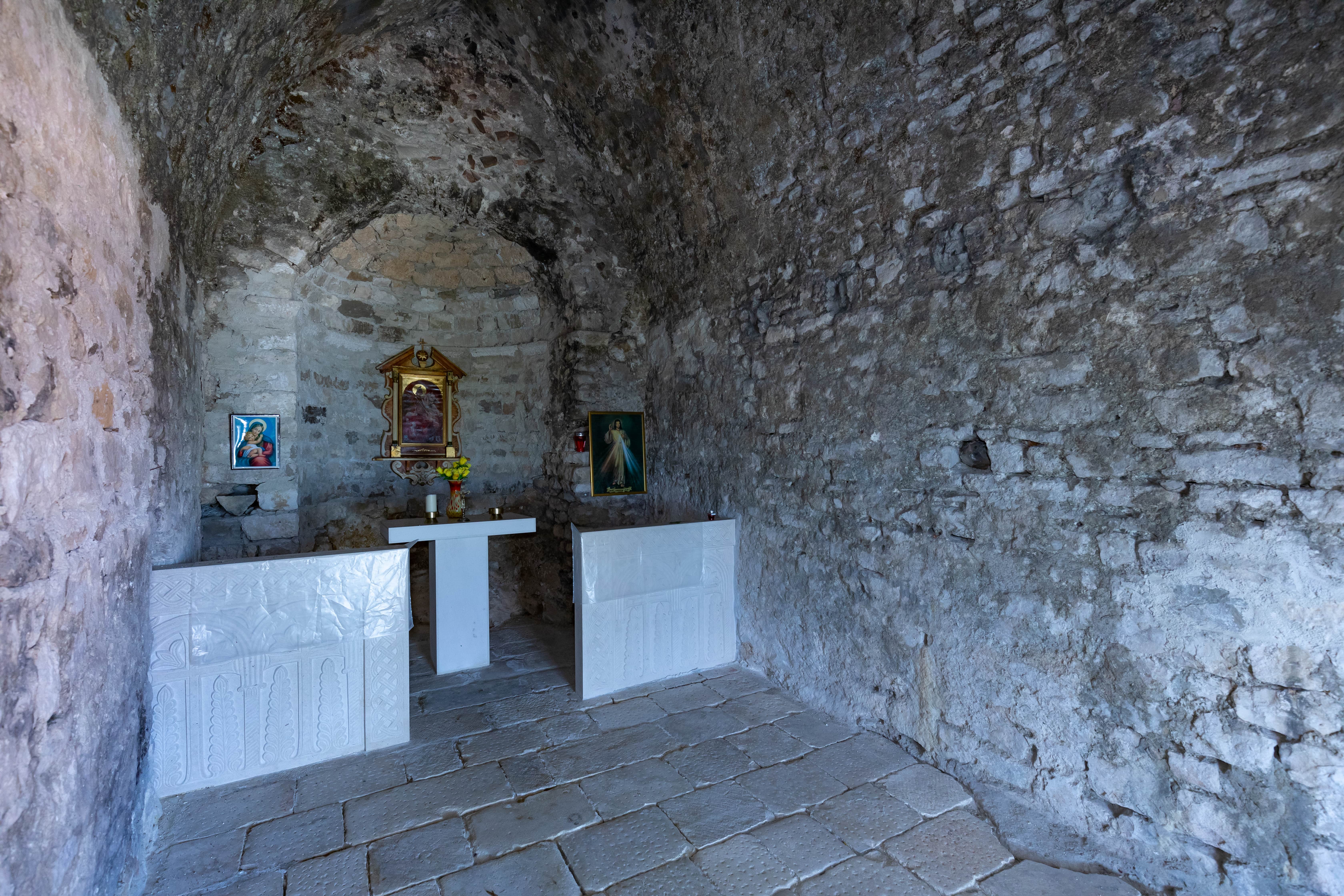
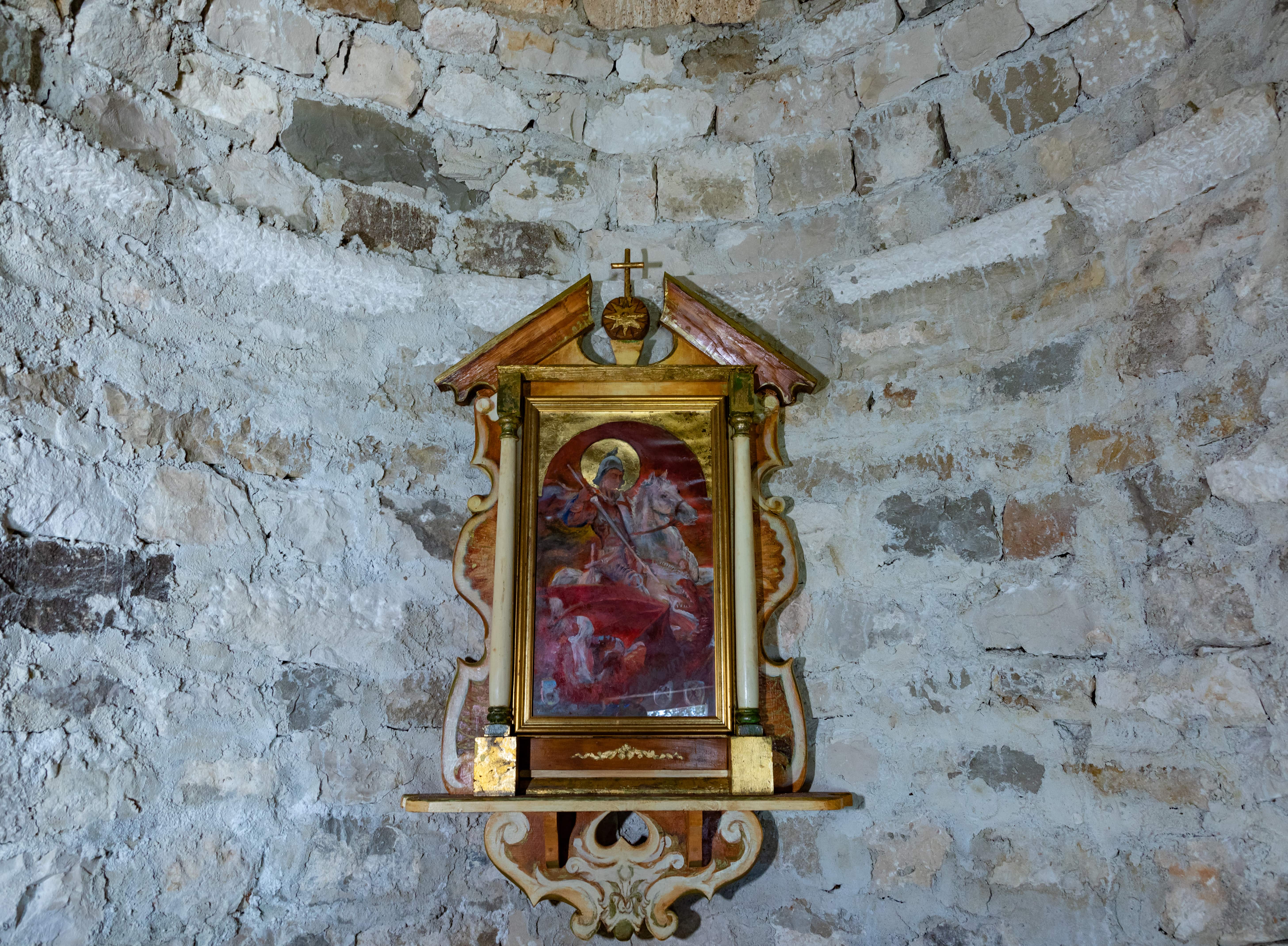
AD DIANAM SITE
In the Roman times, there was a site on Marjan called ‘Ad Dianam’, which is evidenced in the Tabula Peutingeriana, a copy of a Roman itinerary from the Middle Ages (a road map of the world as was known at the time). The original map possibly dates around the year 340. The Croatian lands are shown in segments IV to VII. In the map, Ad Dianam and a road leading to it was marked on Marjan.
CHURCH OF ST. BENEDICT
The Bay of Bene owes its name to the former Church of St. Benedict.
Archaeological excavations have uncovered the remaining parts of the church, which was built in the late 11th or early 12th century. The reconstructed walls of the church now stand 50 cm high, and the altar pillar (stipes) has been placed back in its original location. Despite the popularity of the Benedictine order, churches dedicated to St. Benedict are rare among medieval churches, which makes this particular church quite unique.
